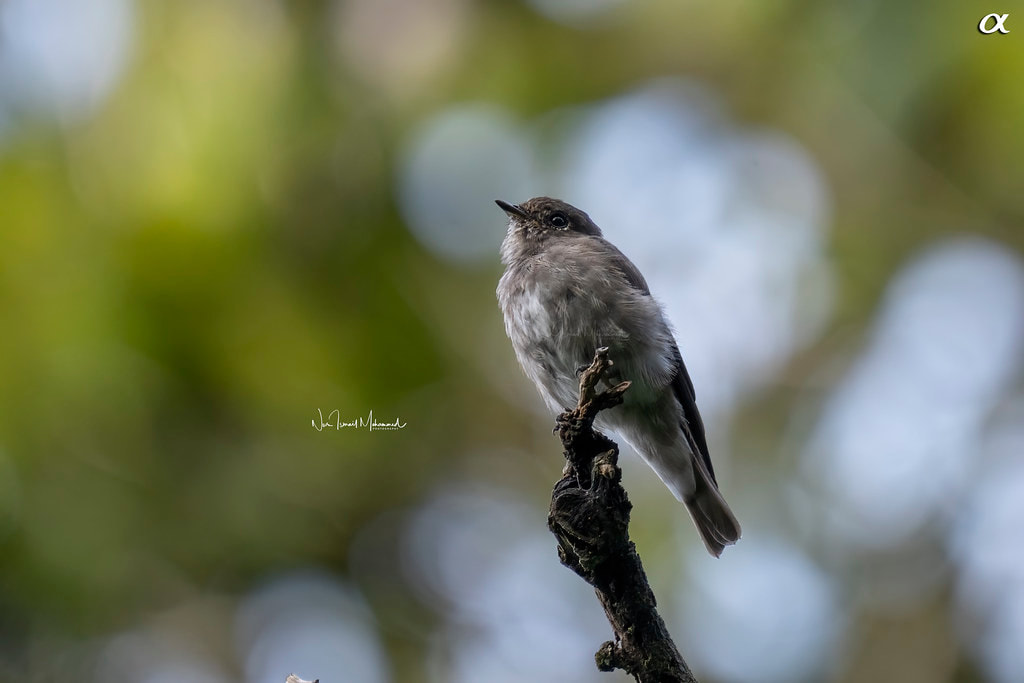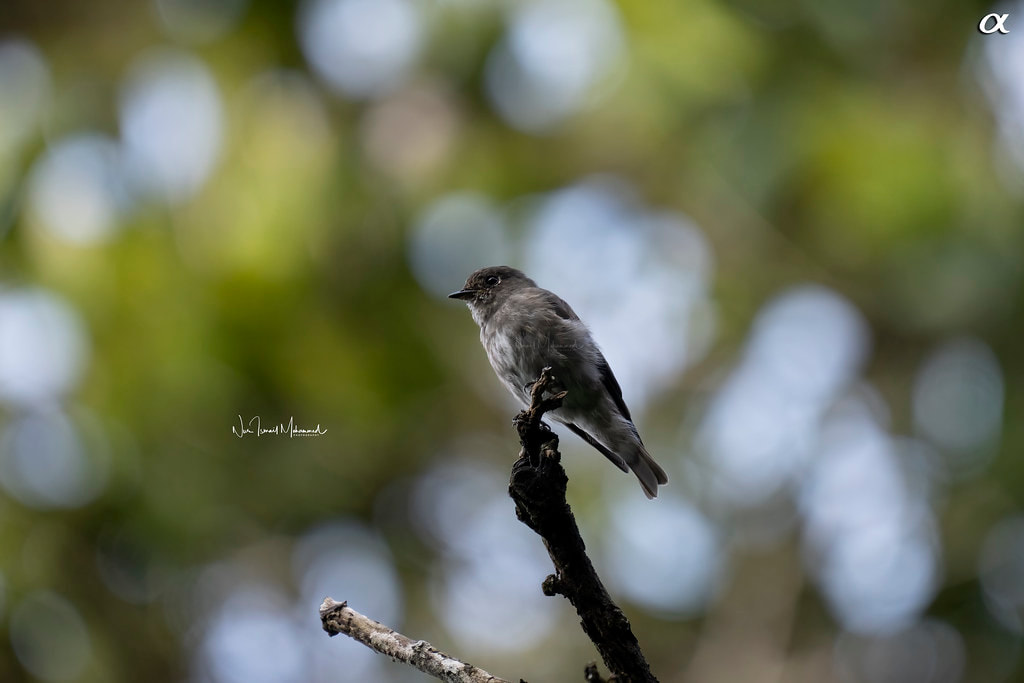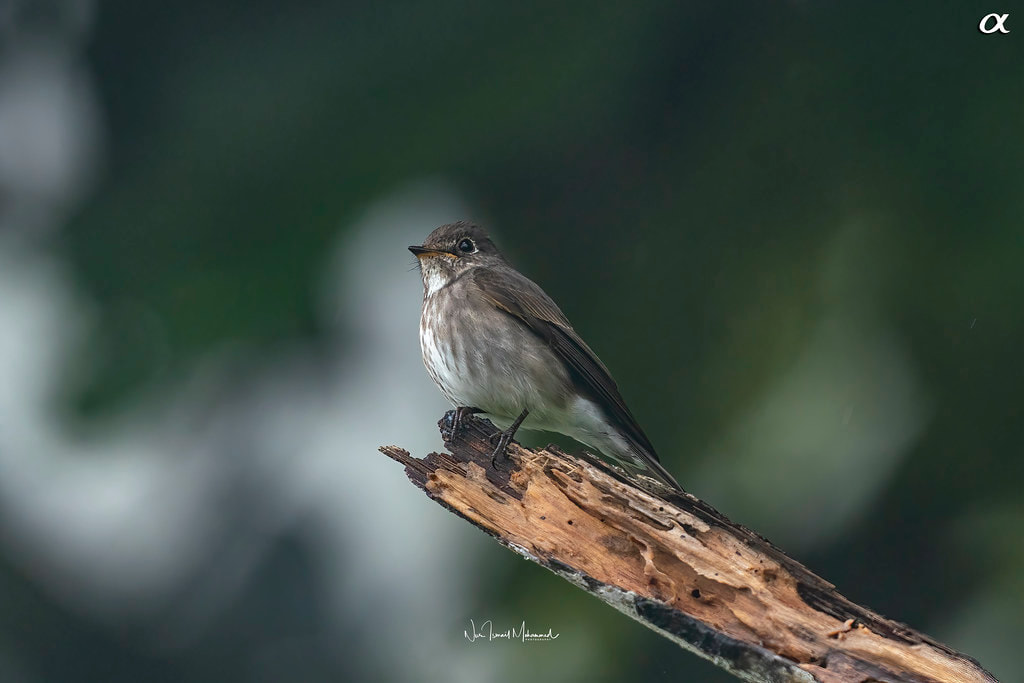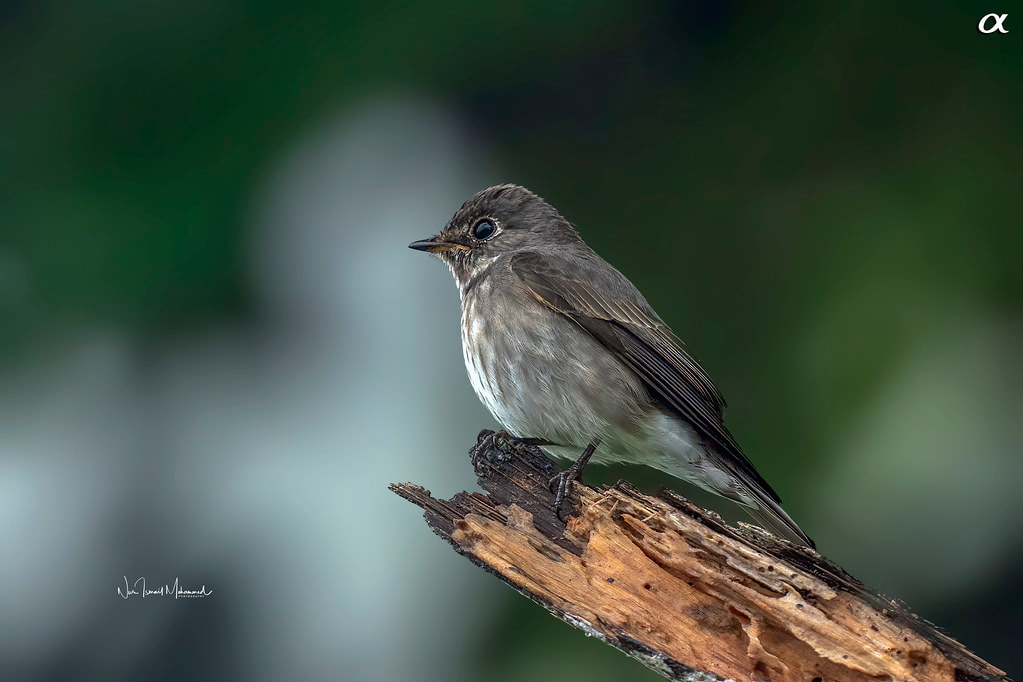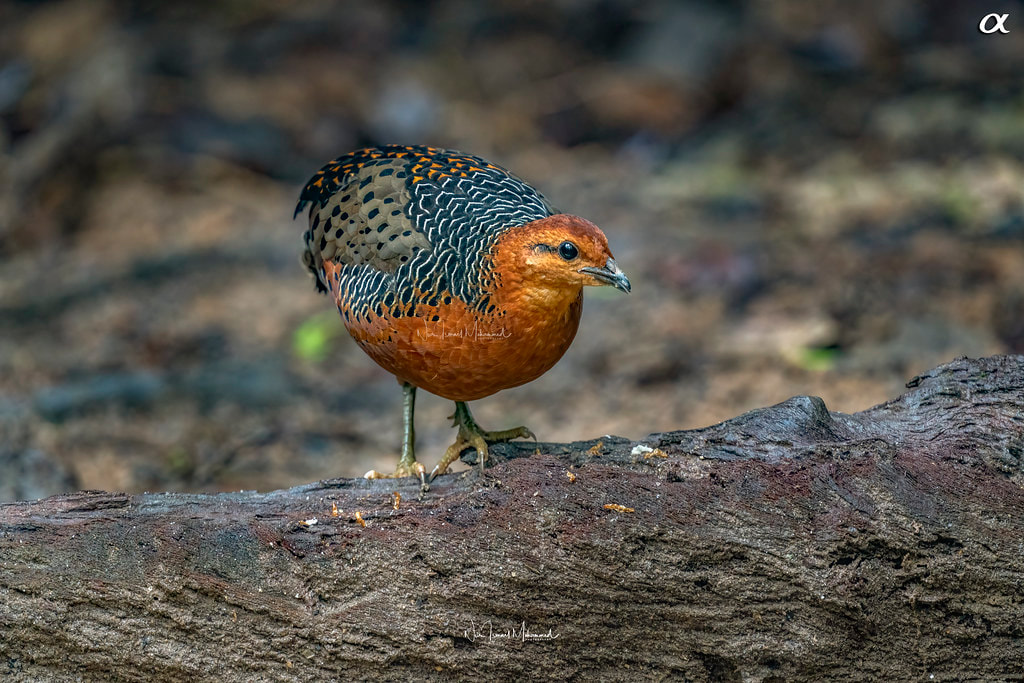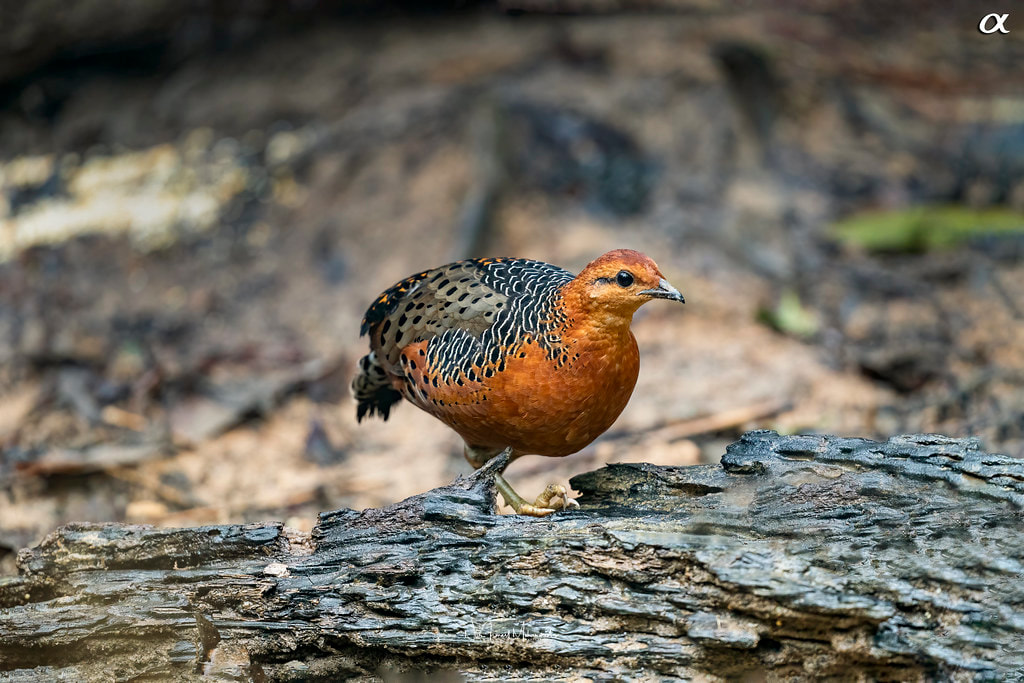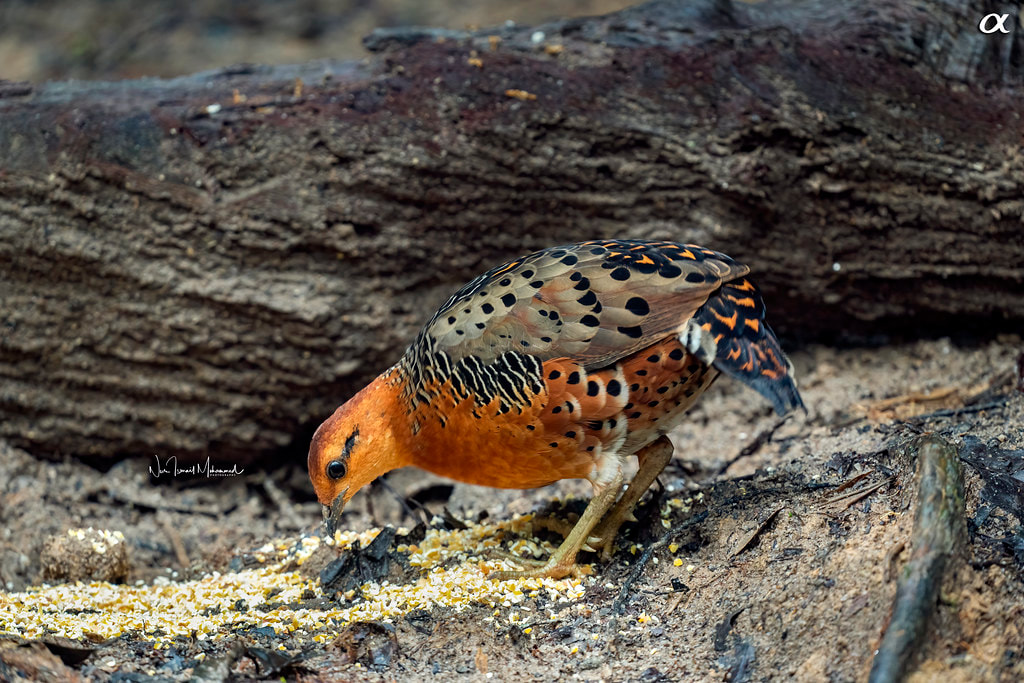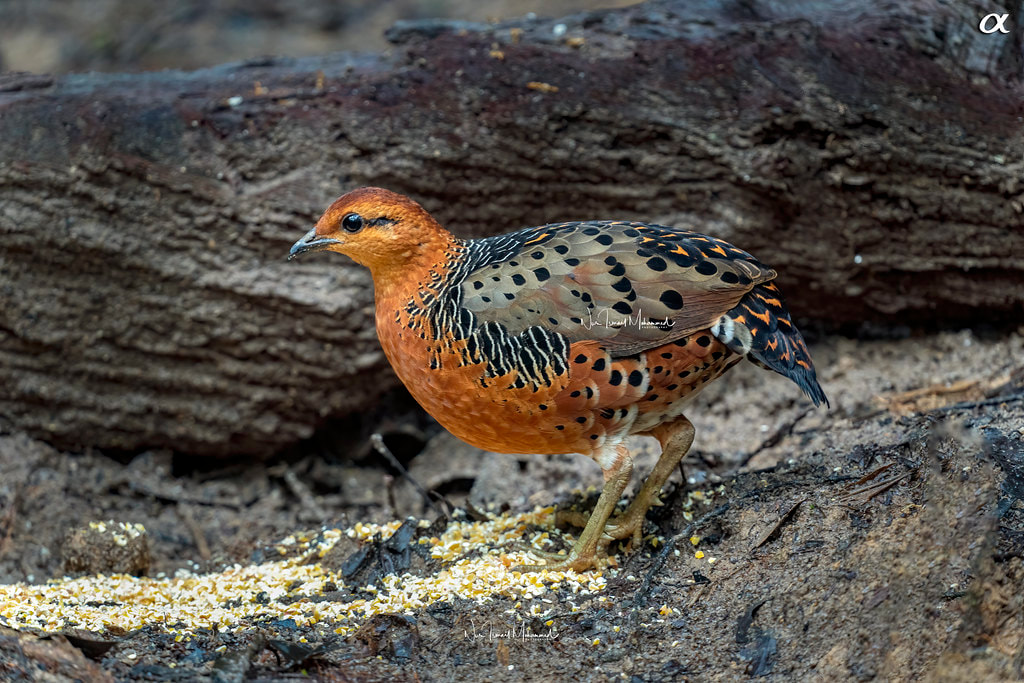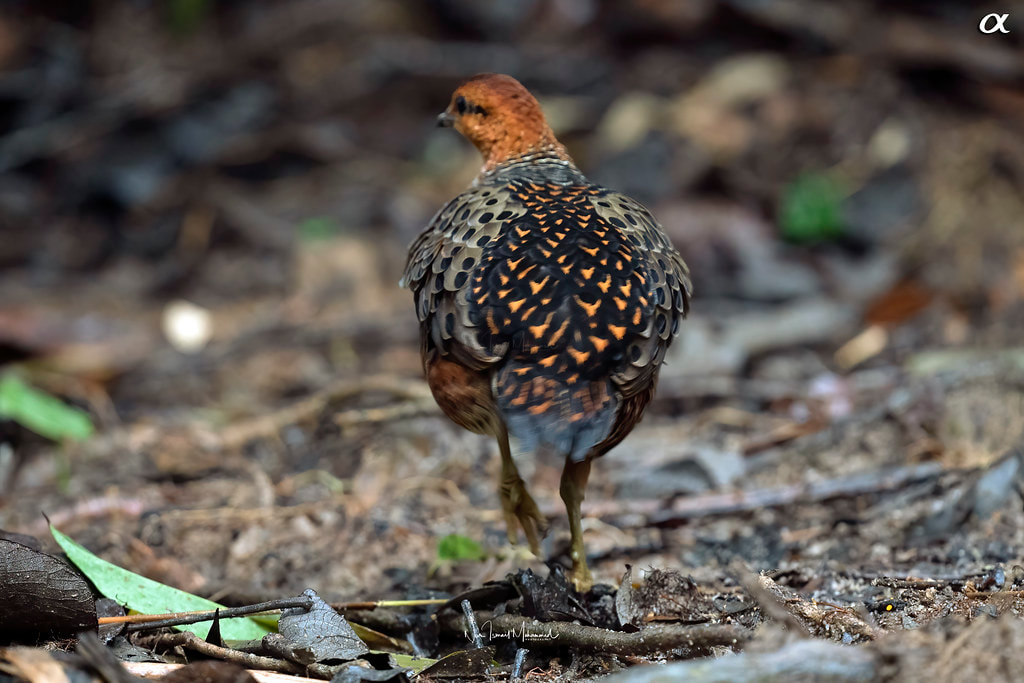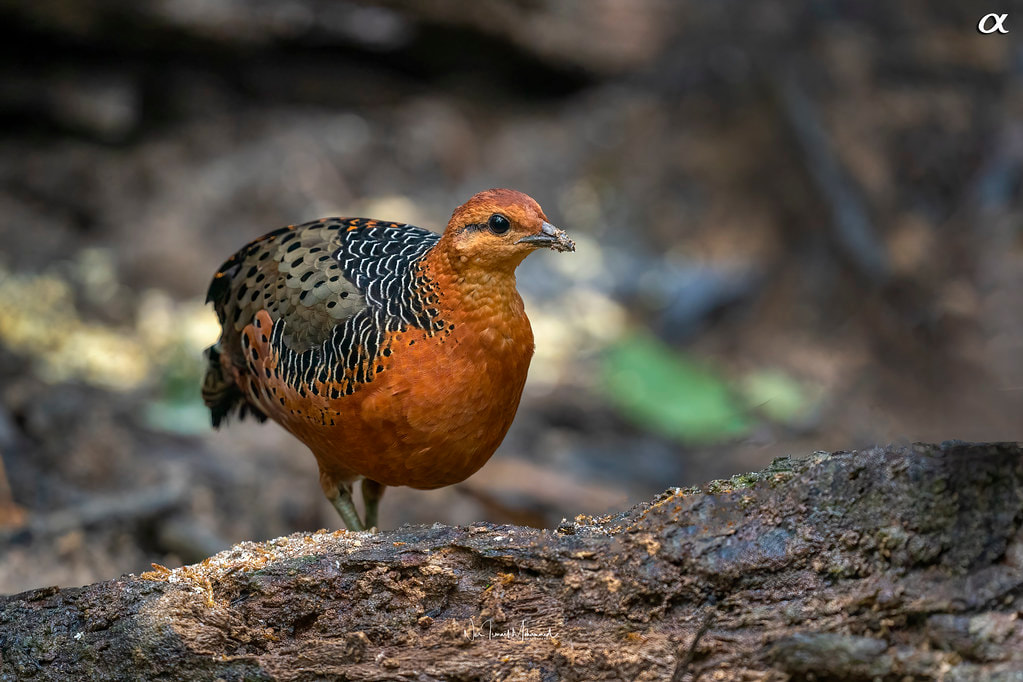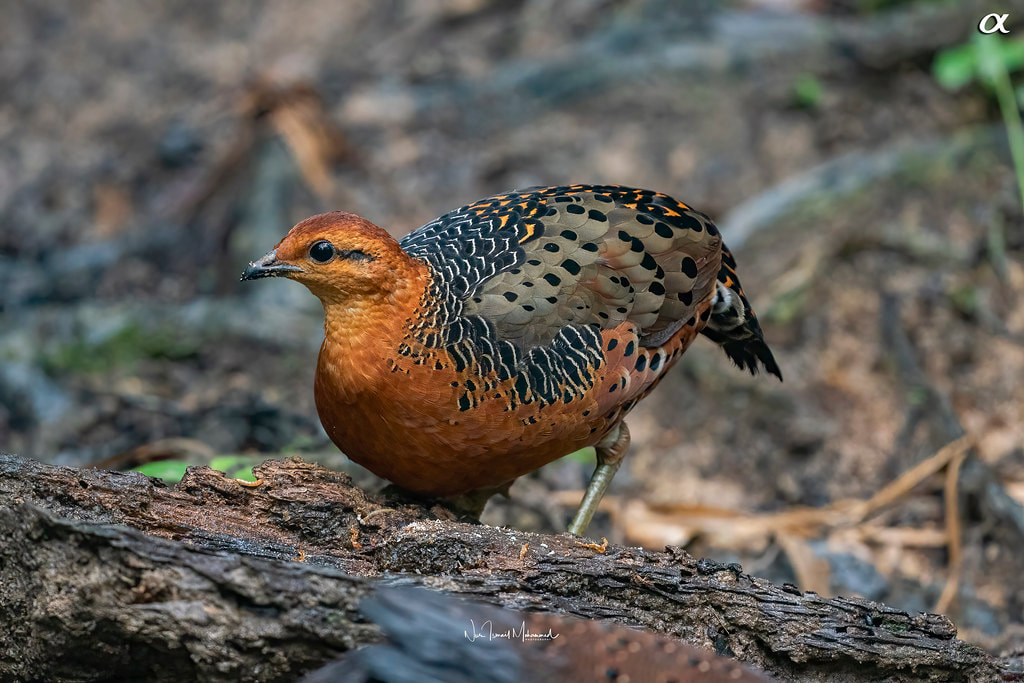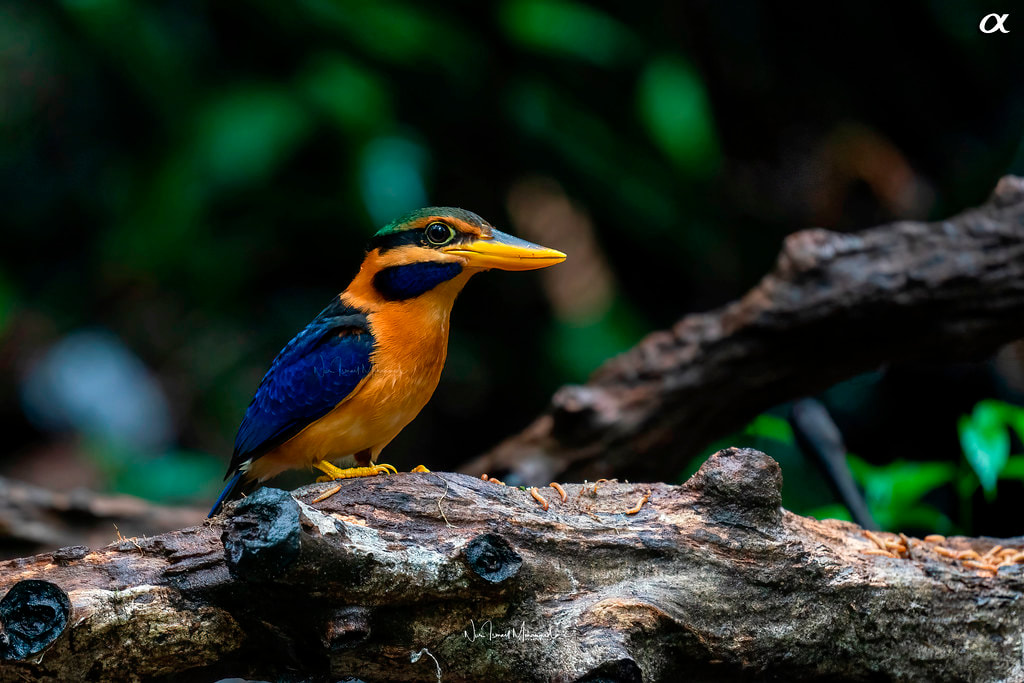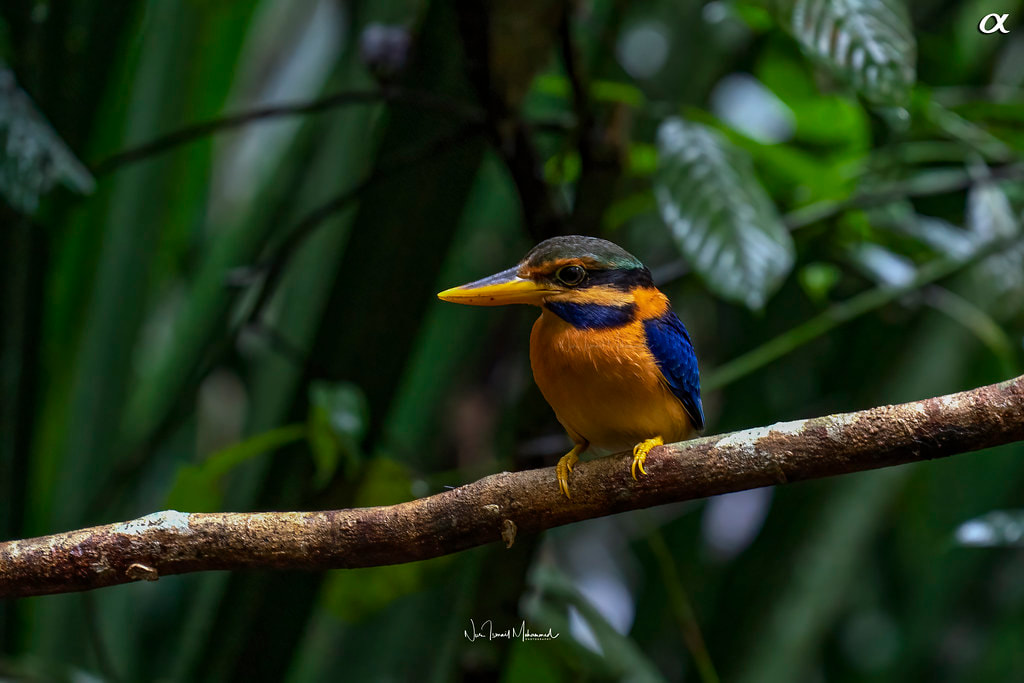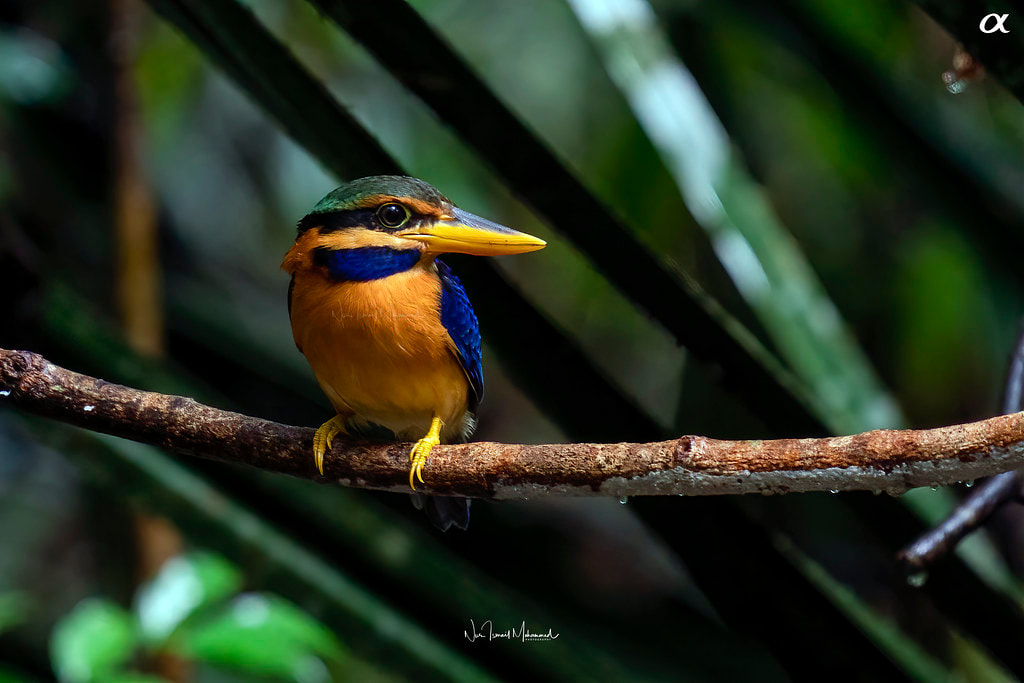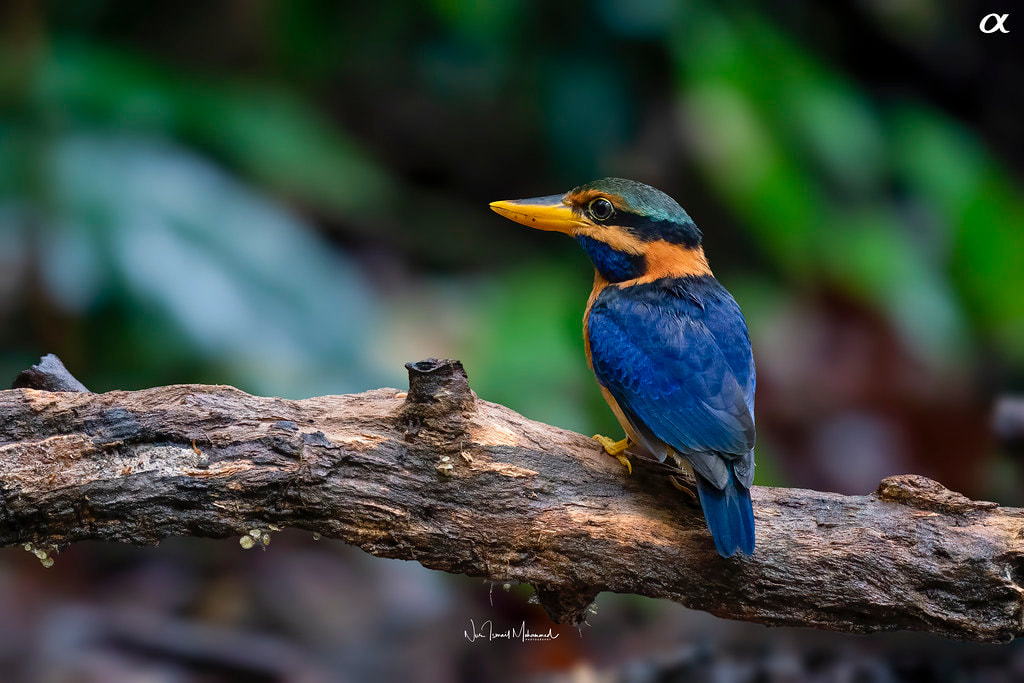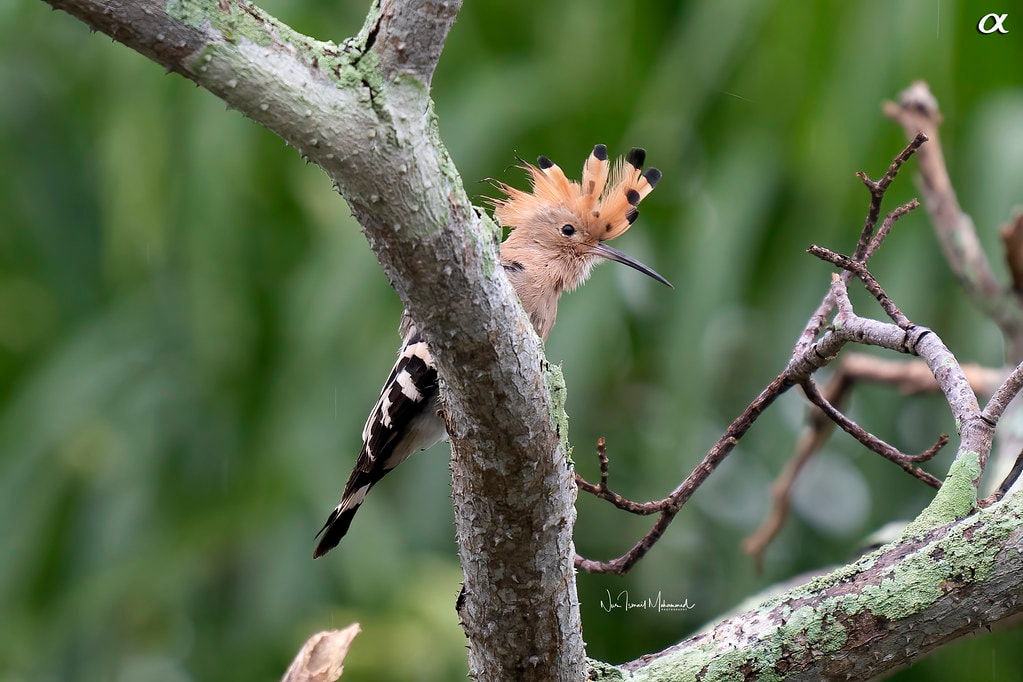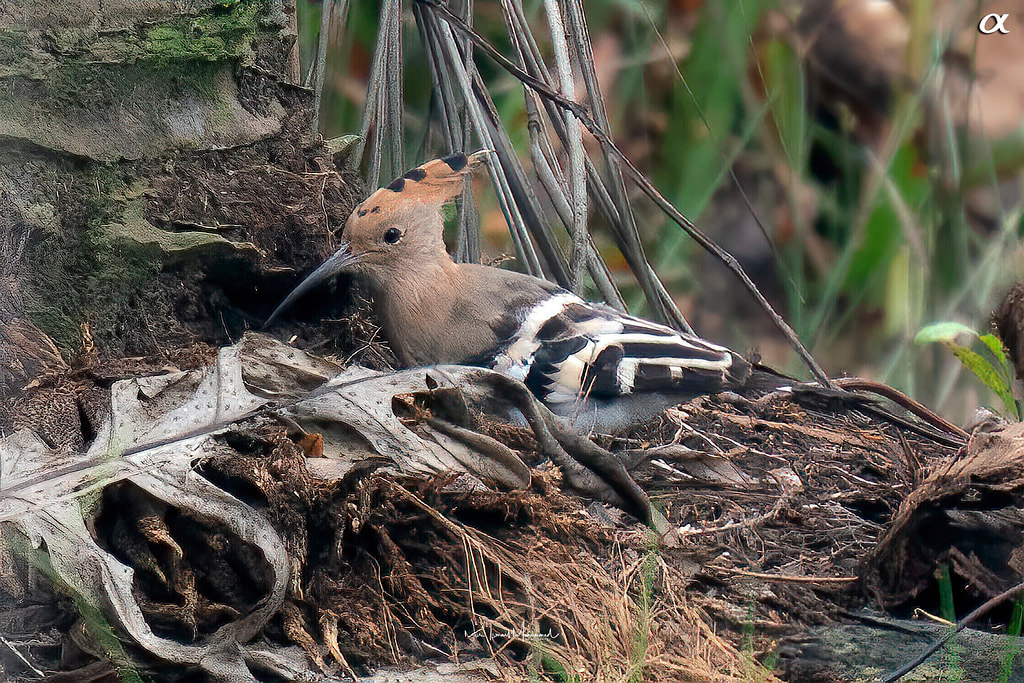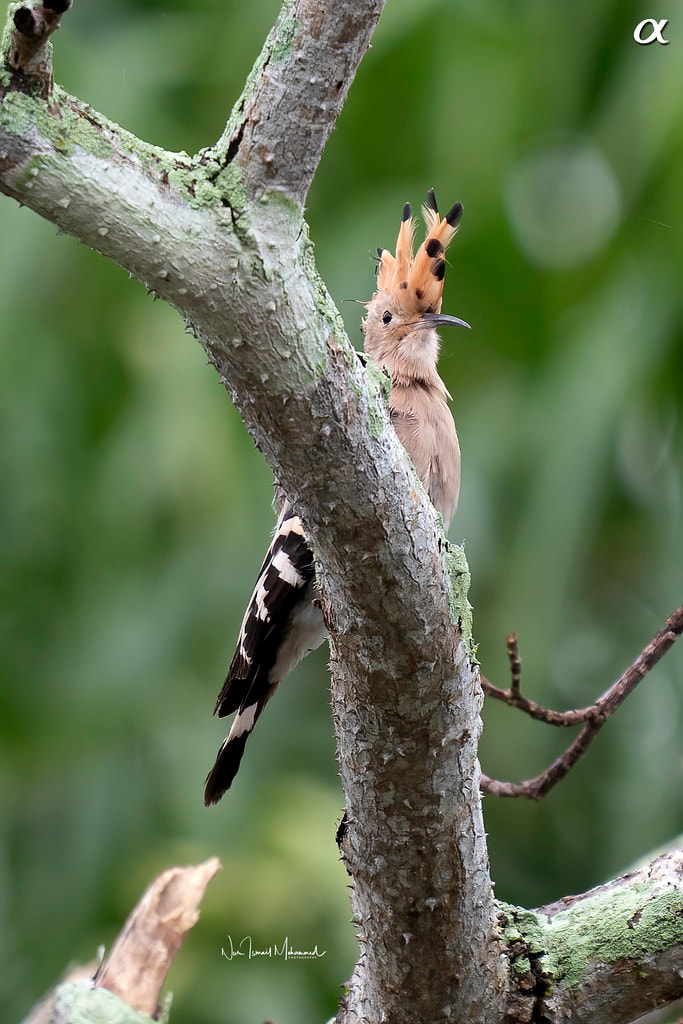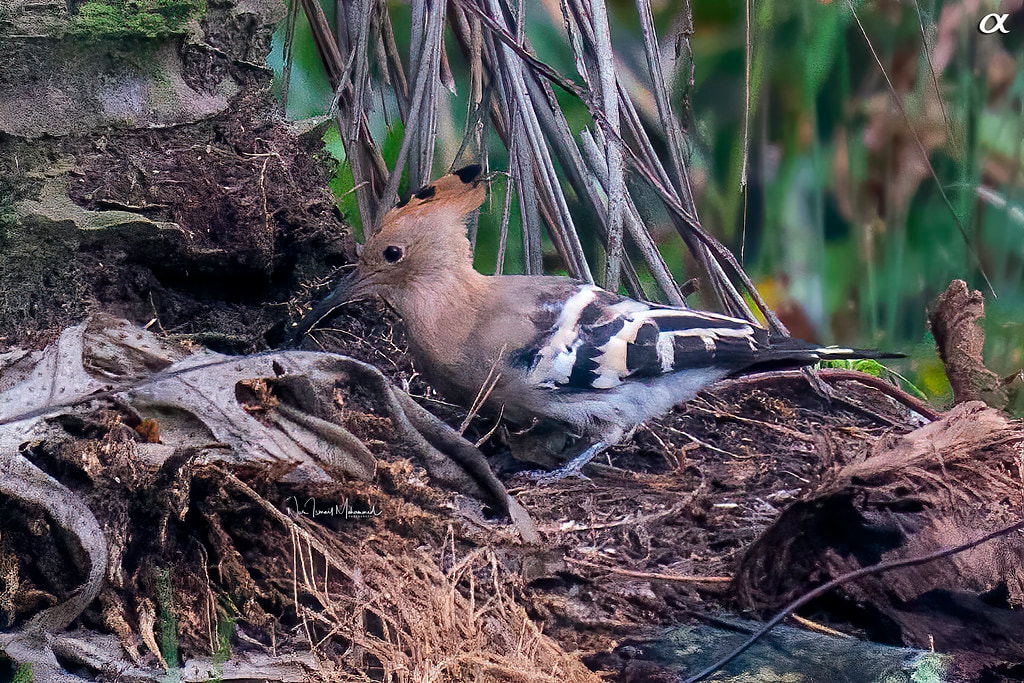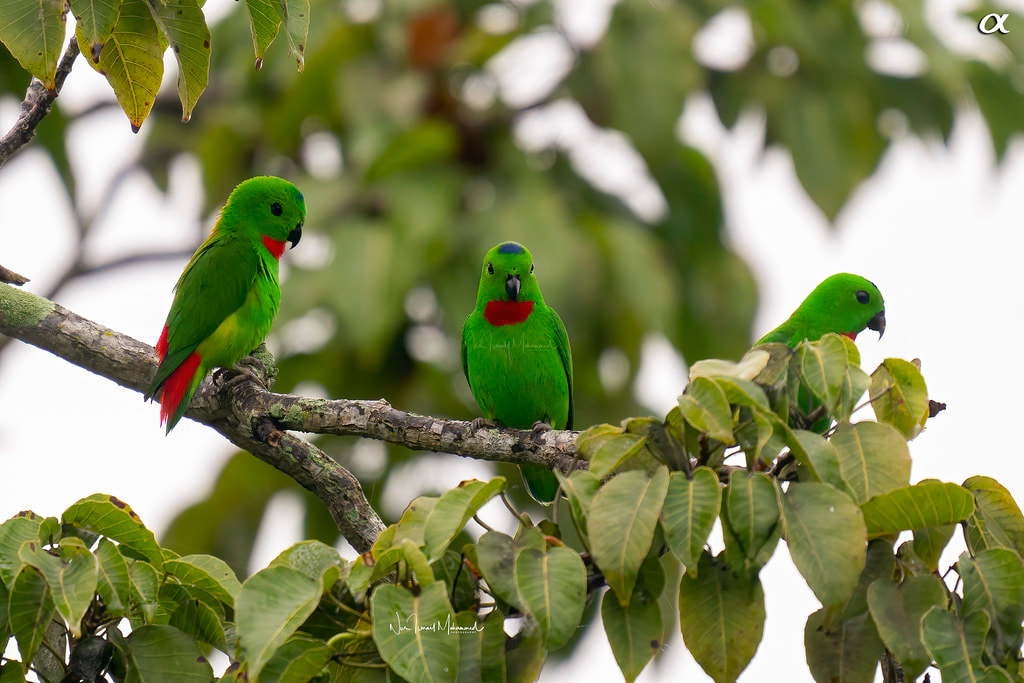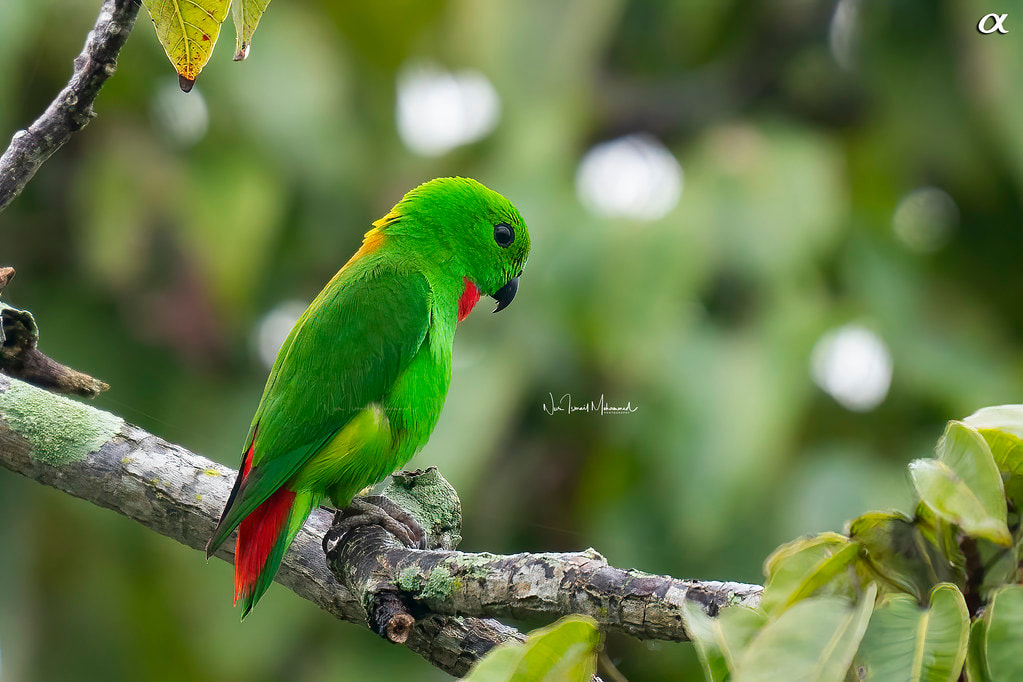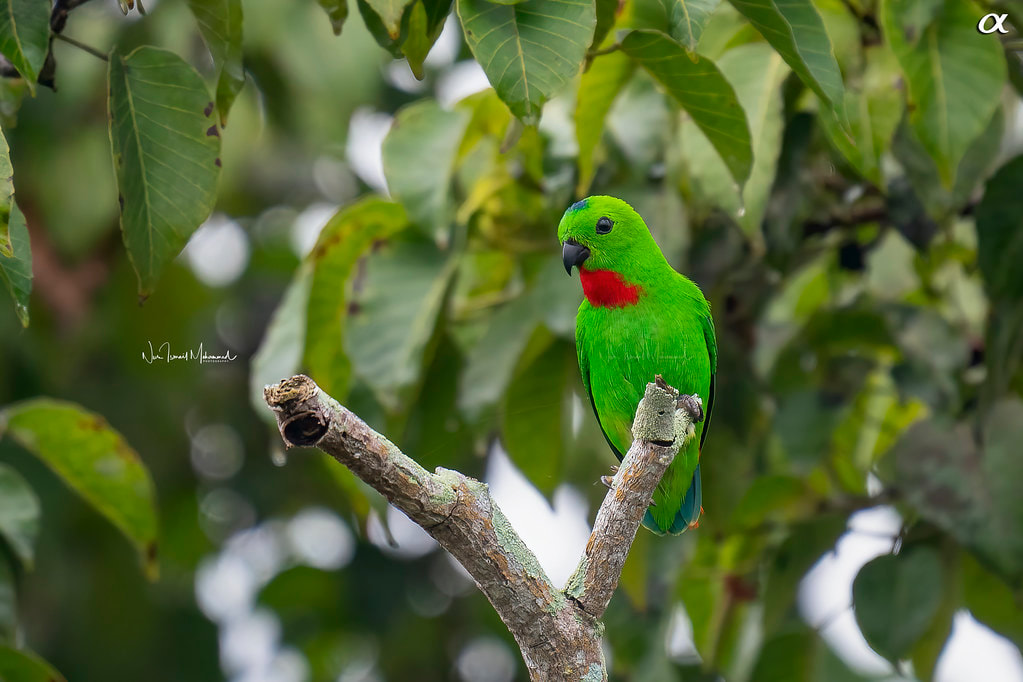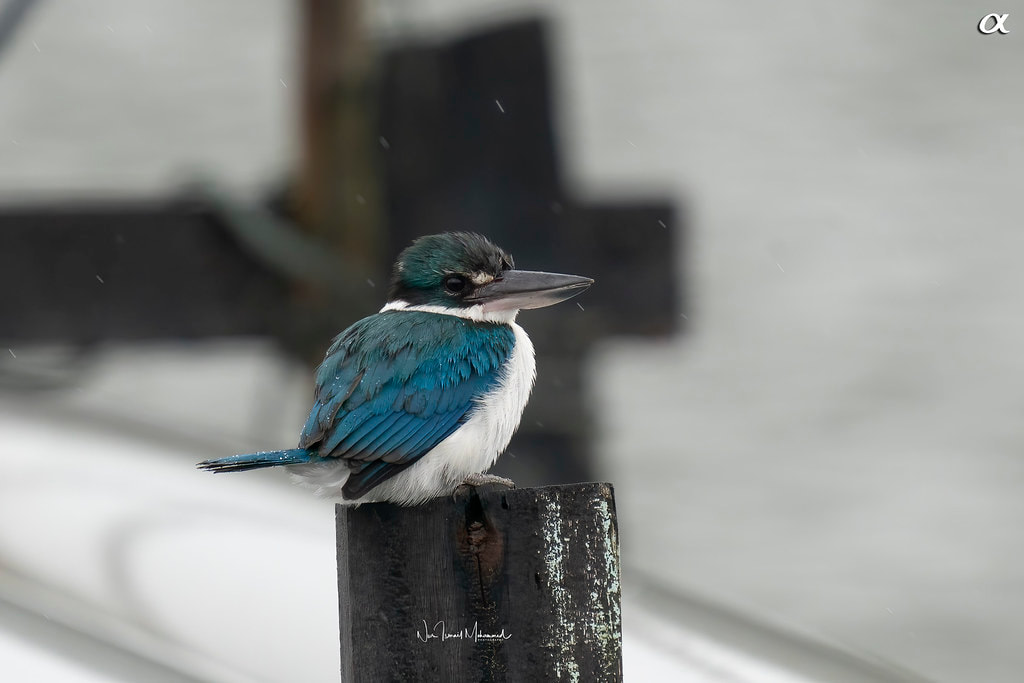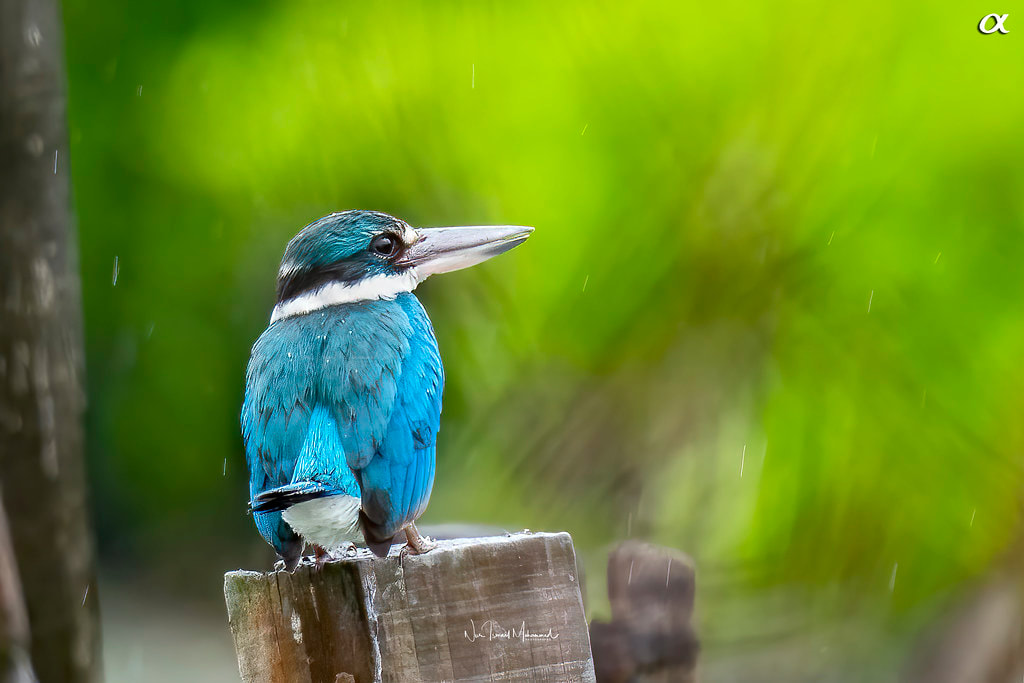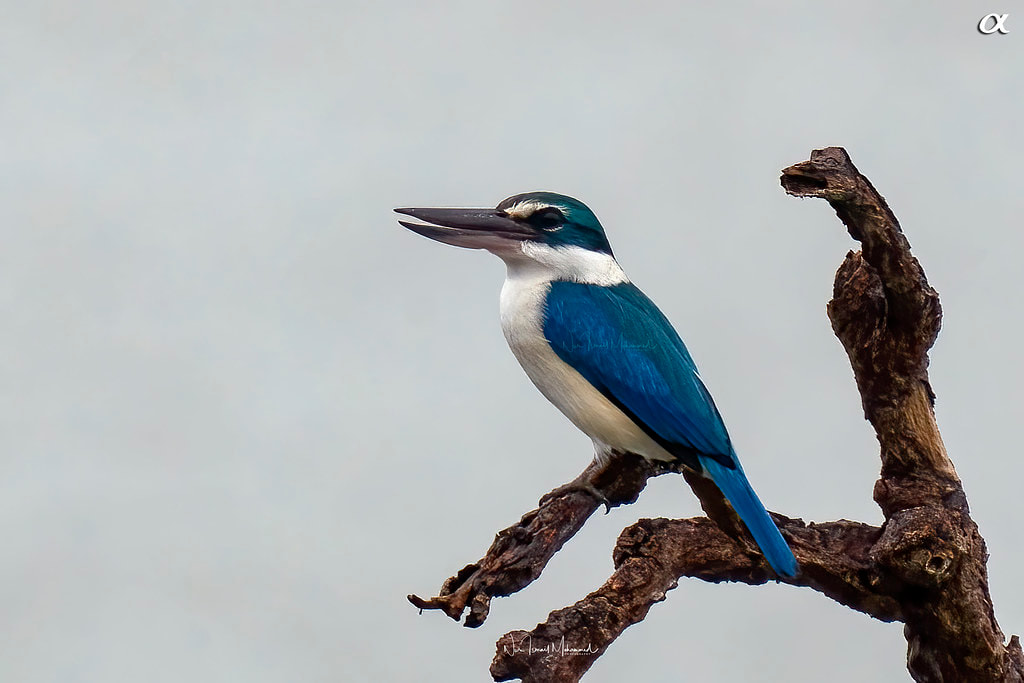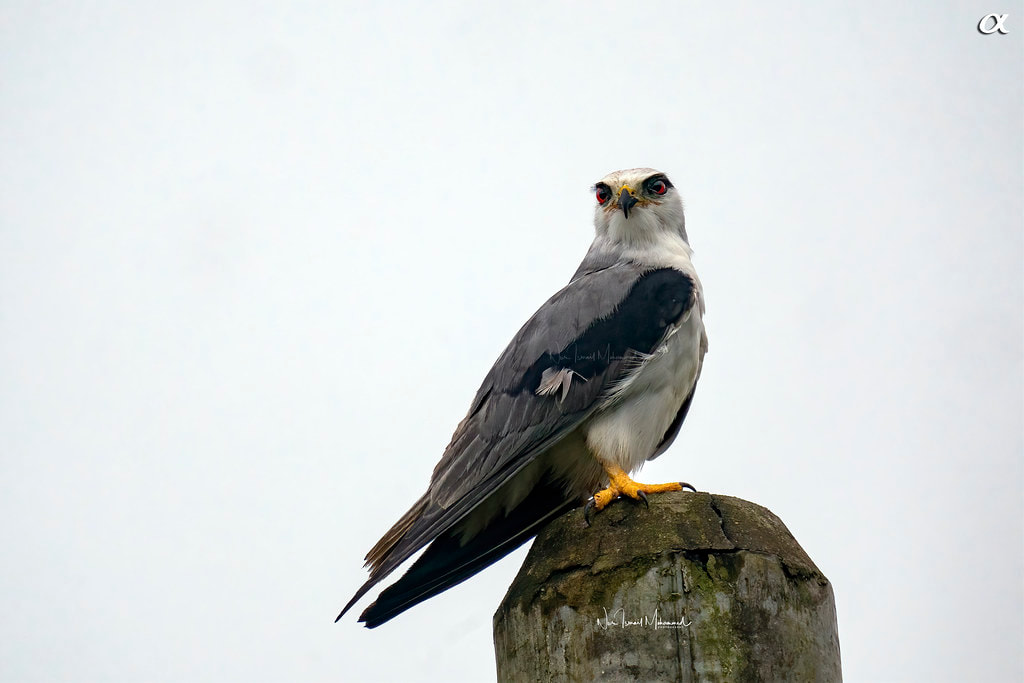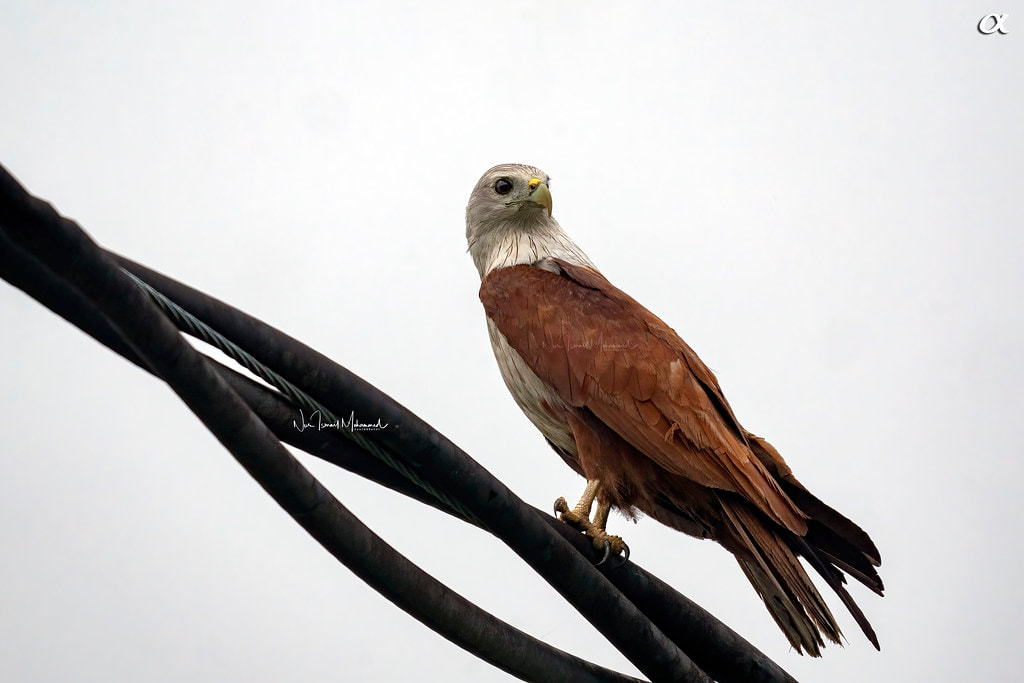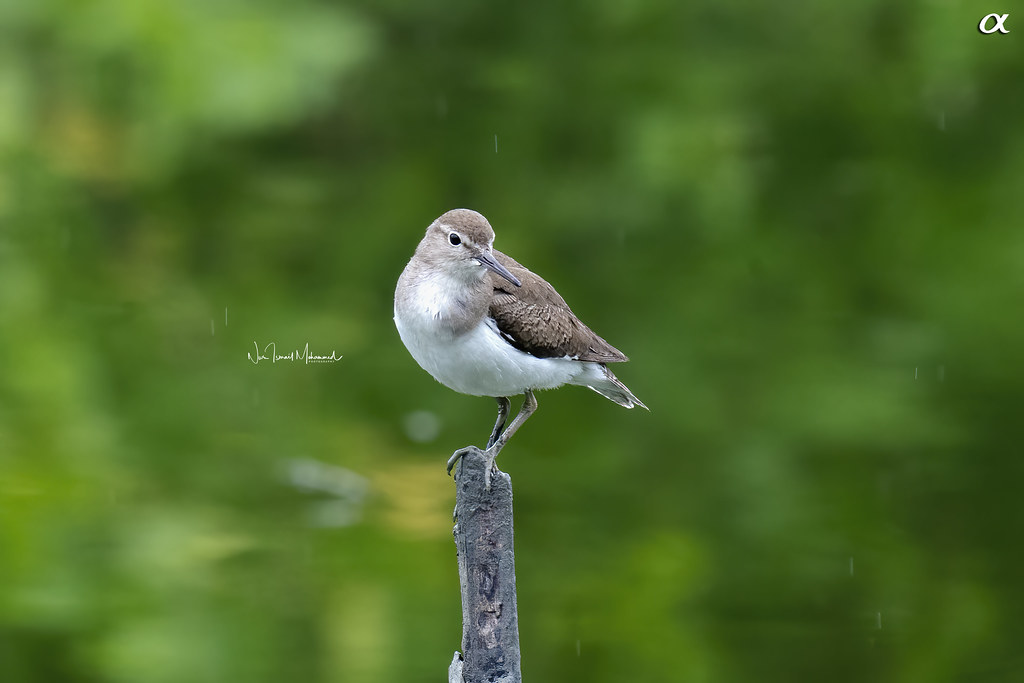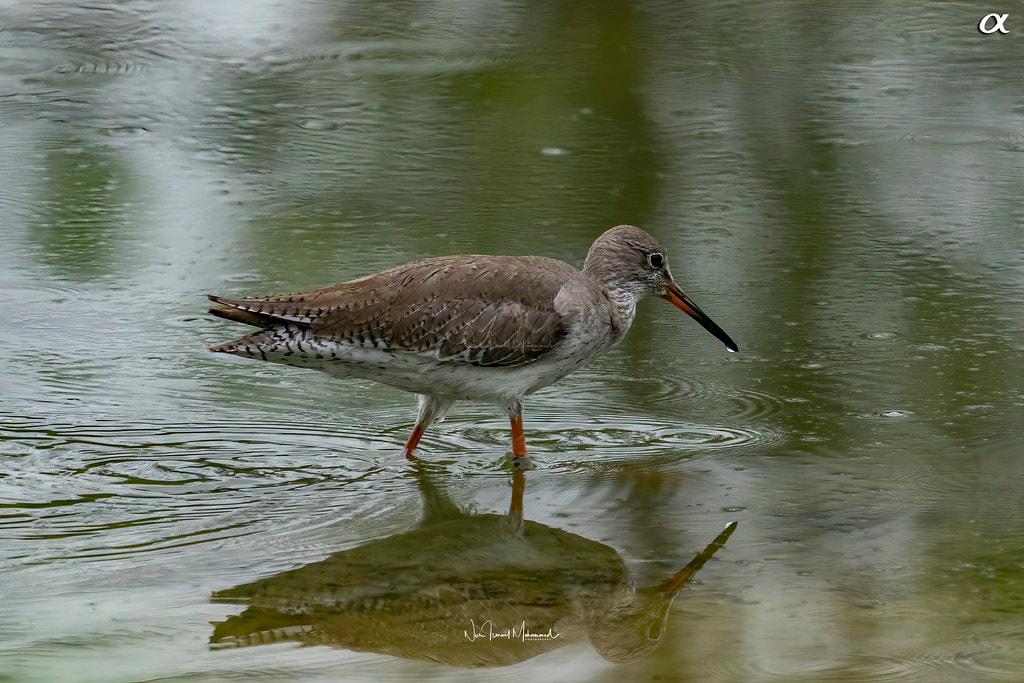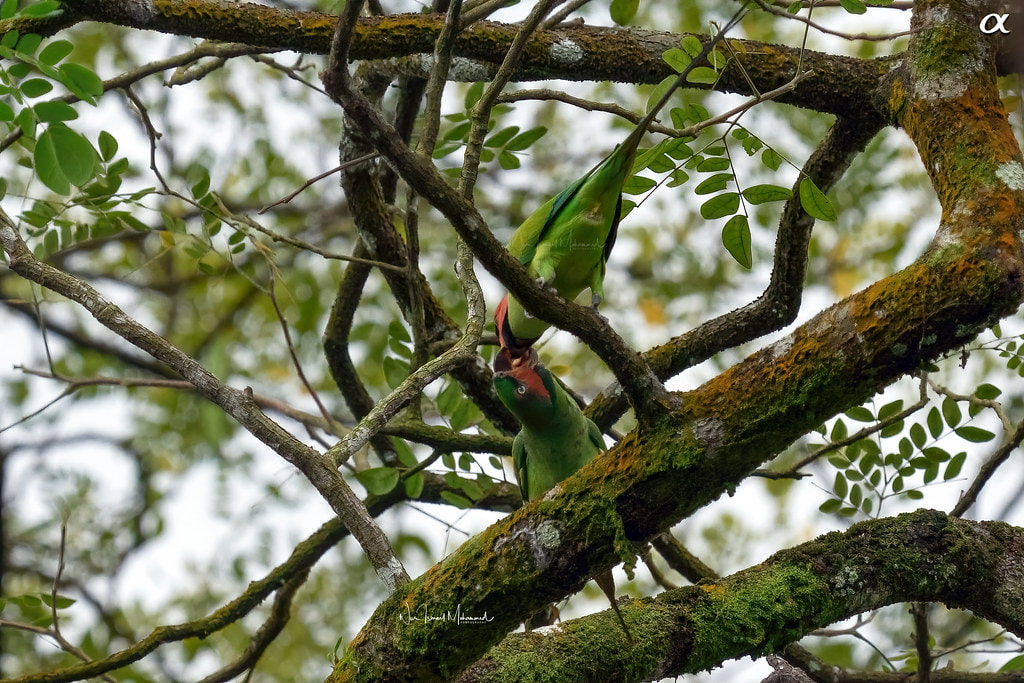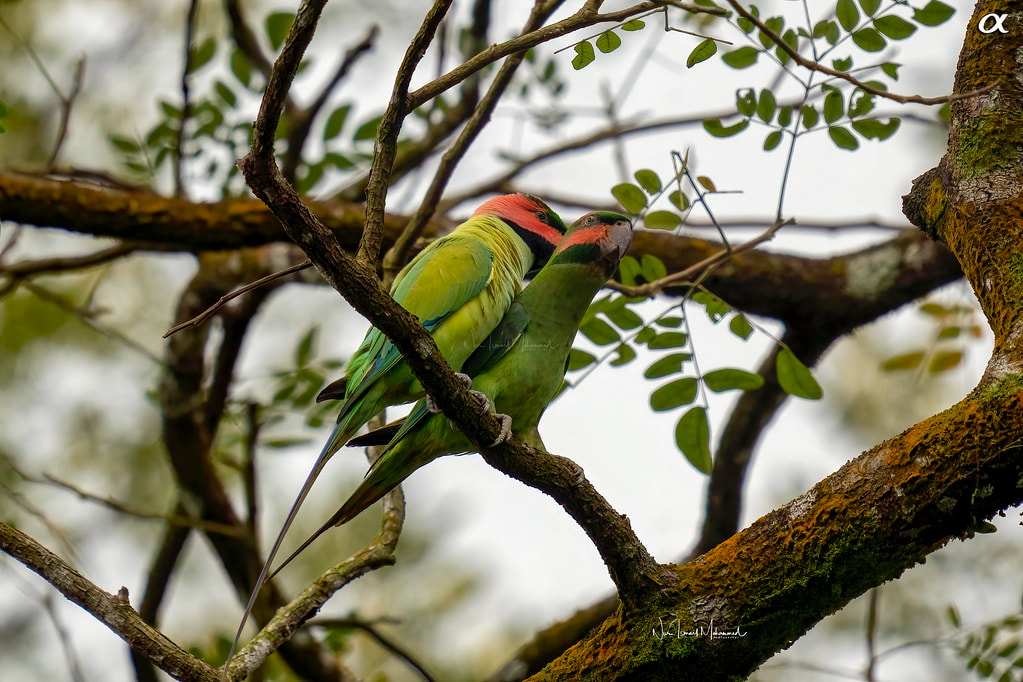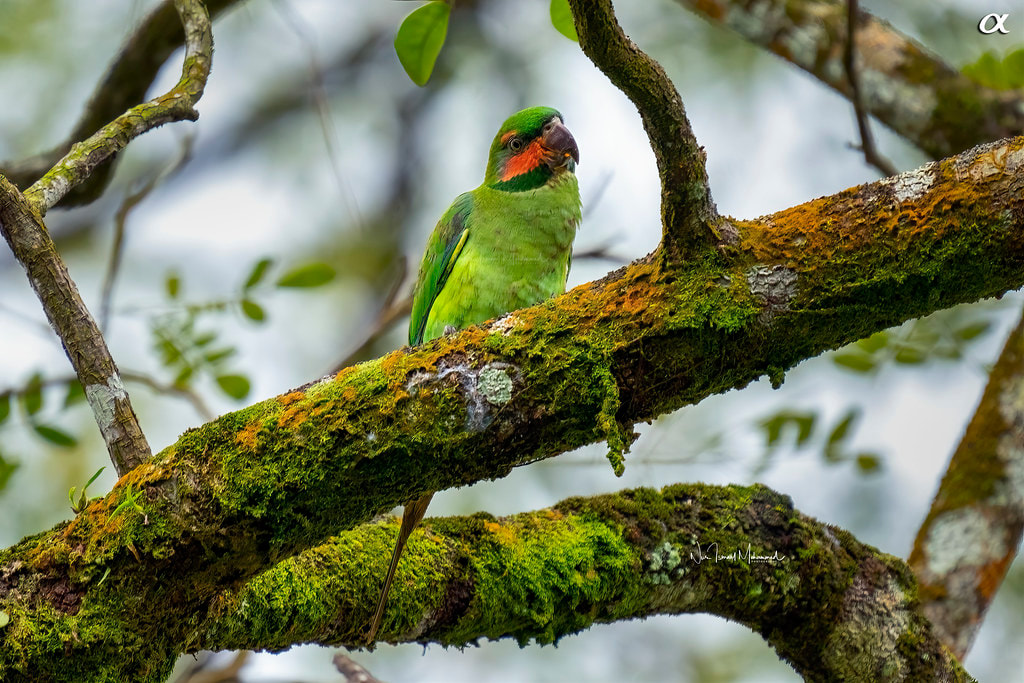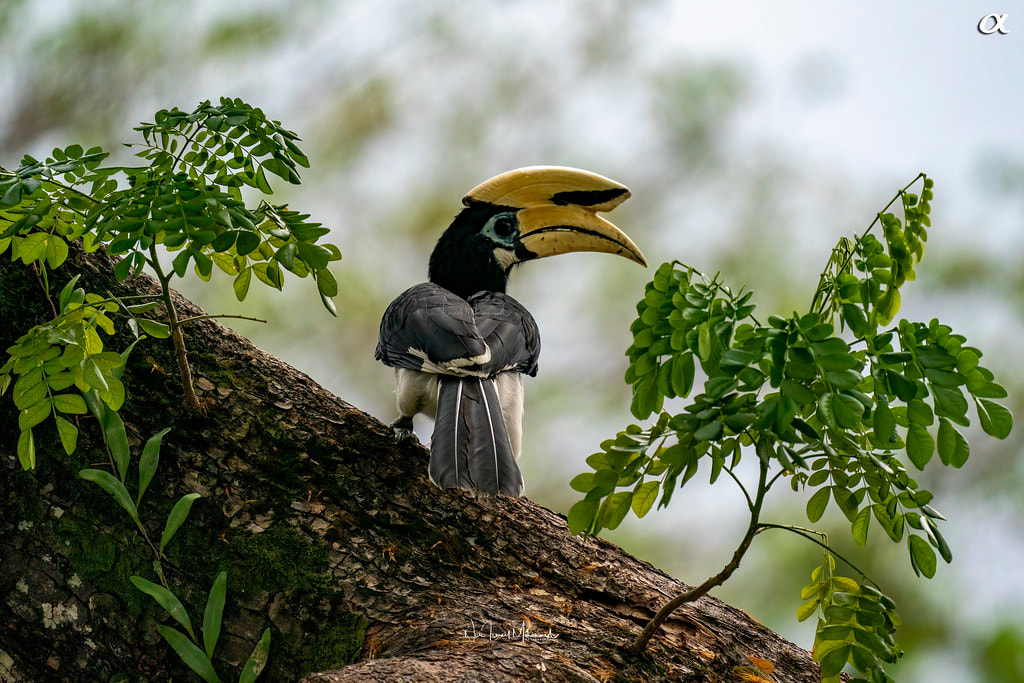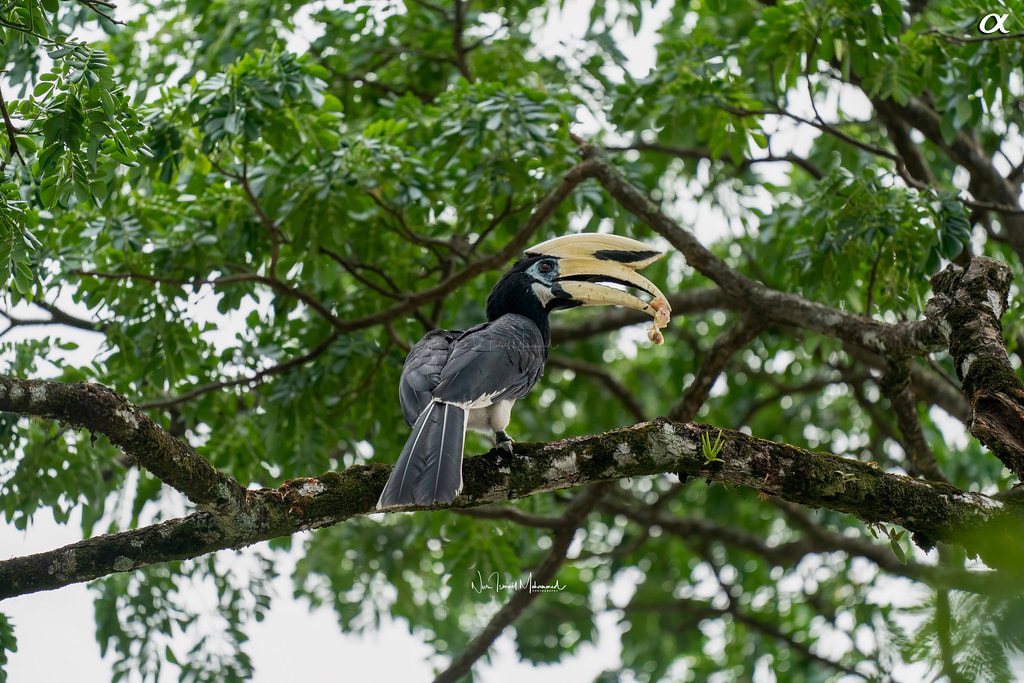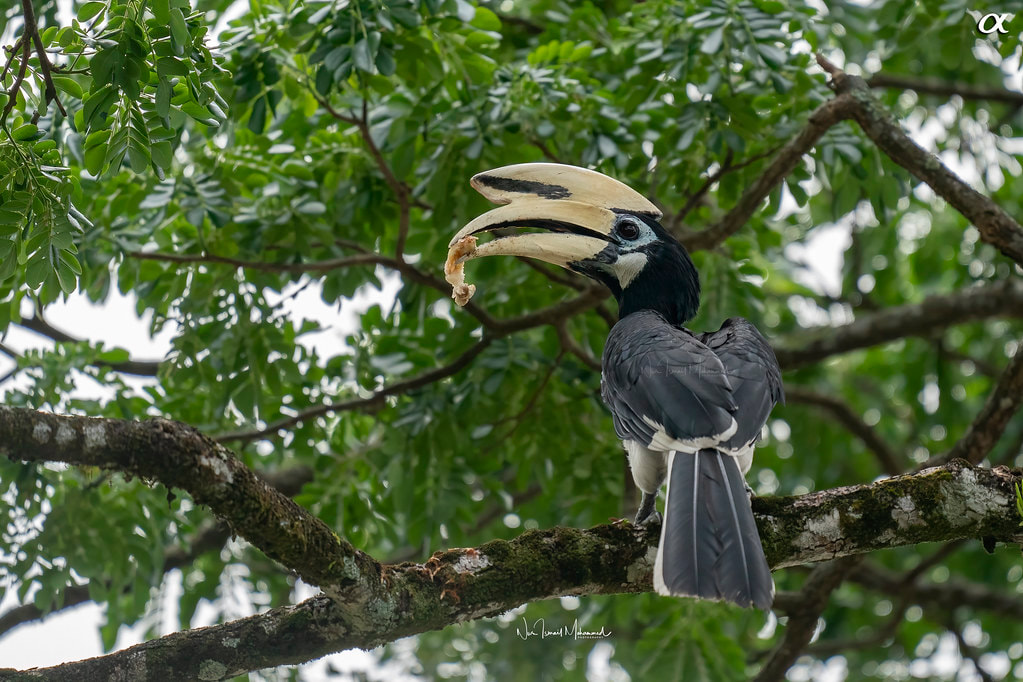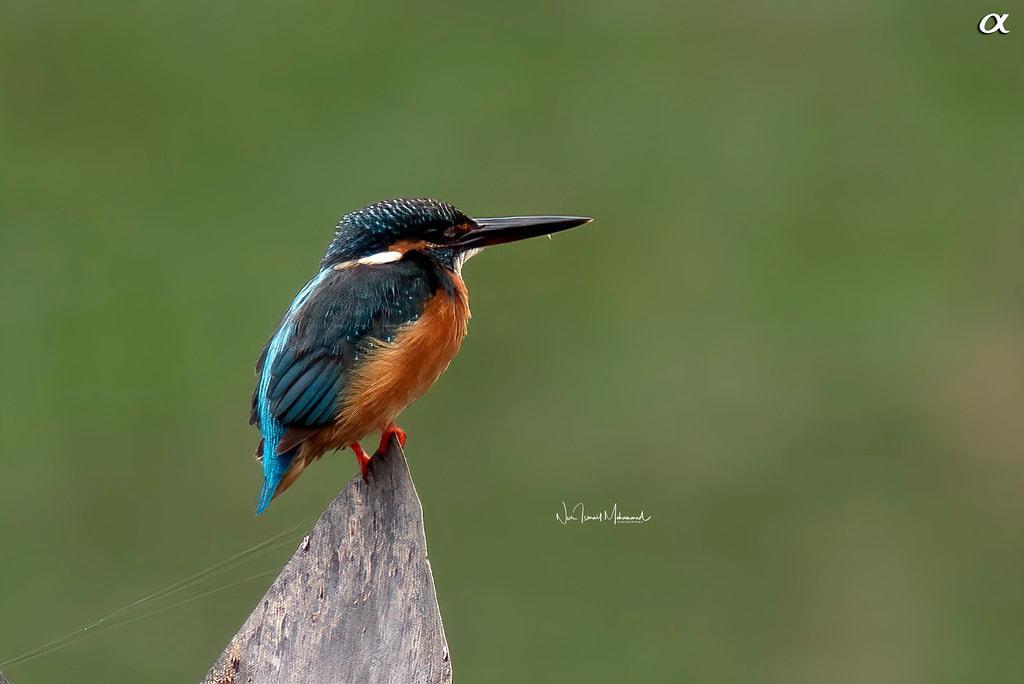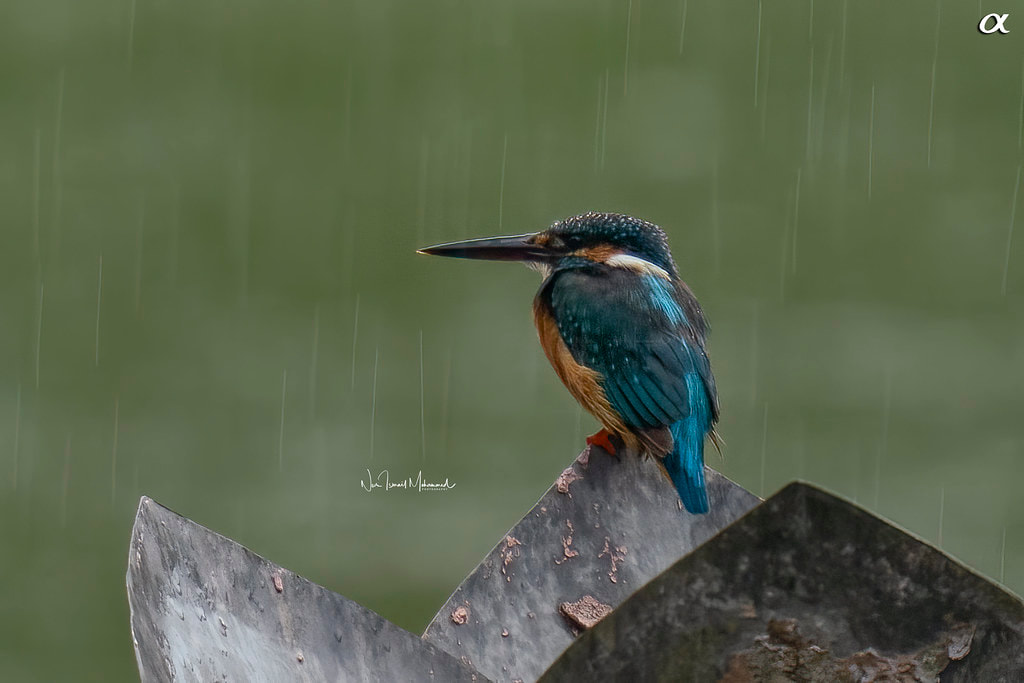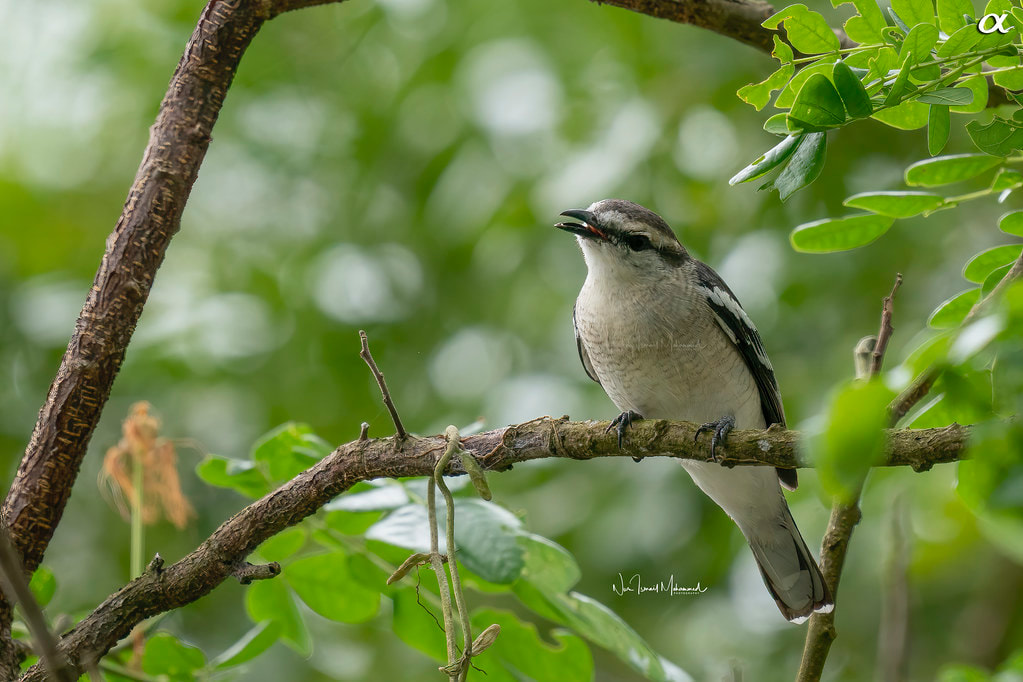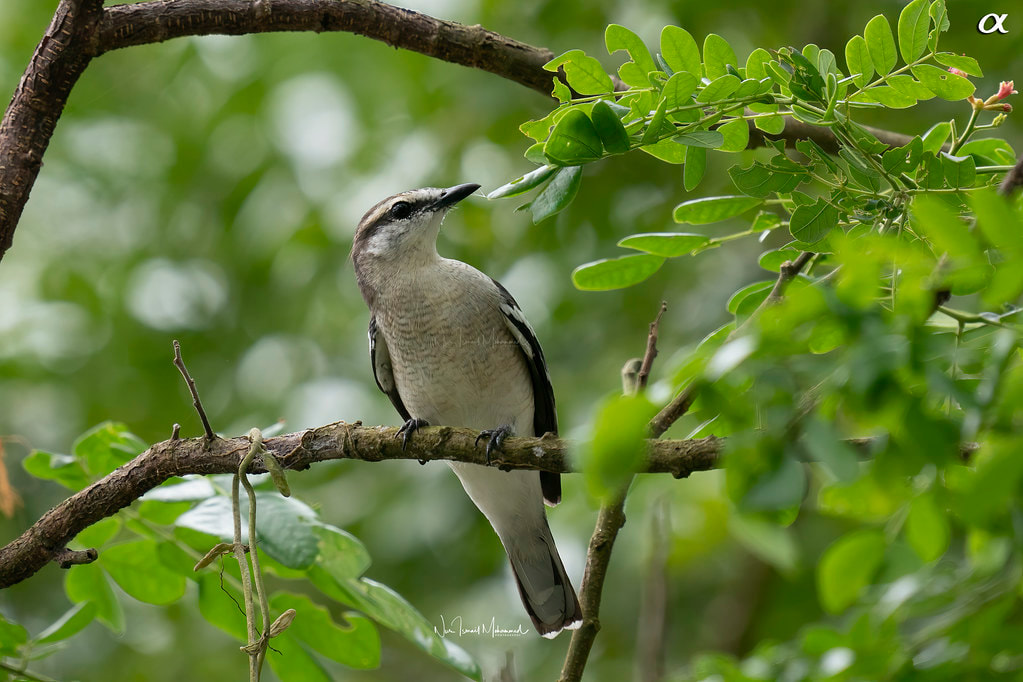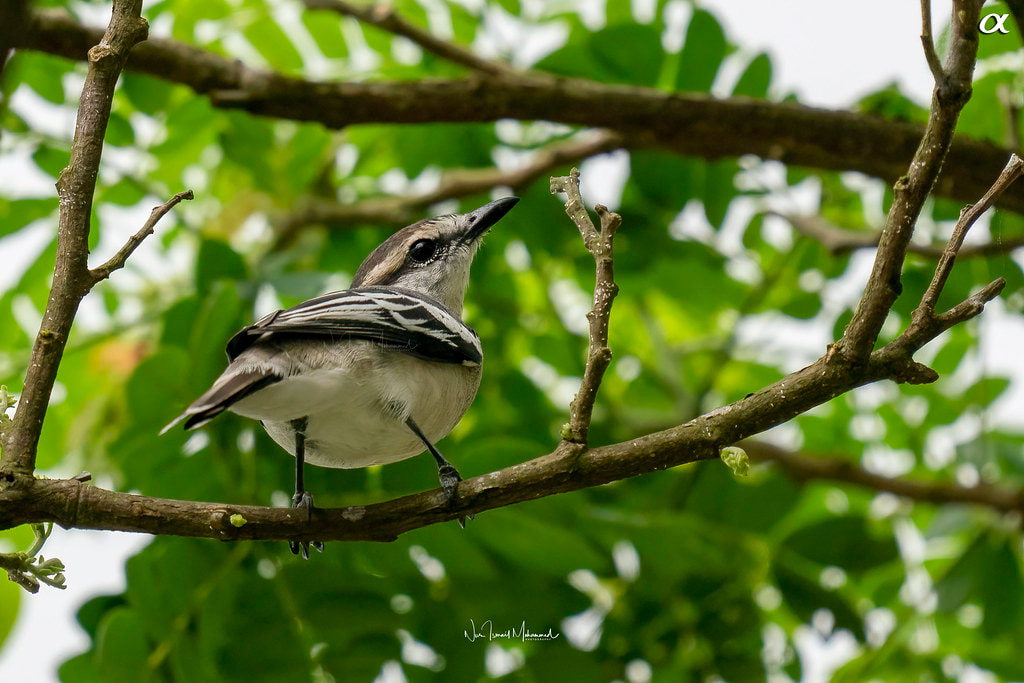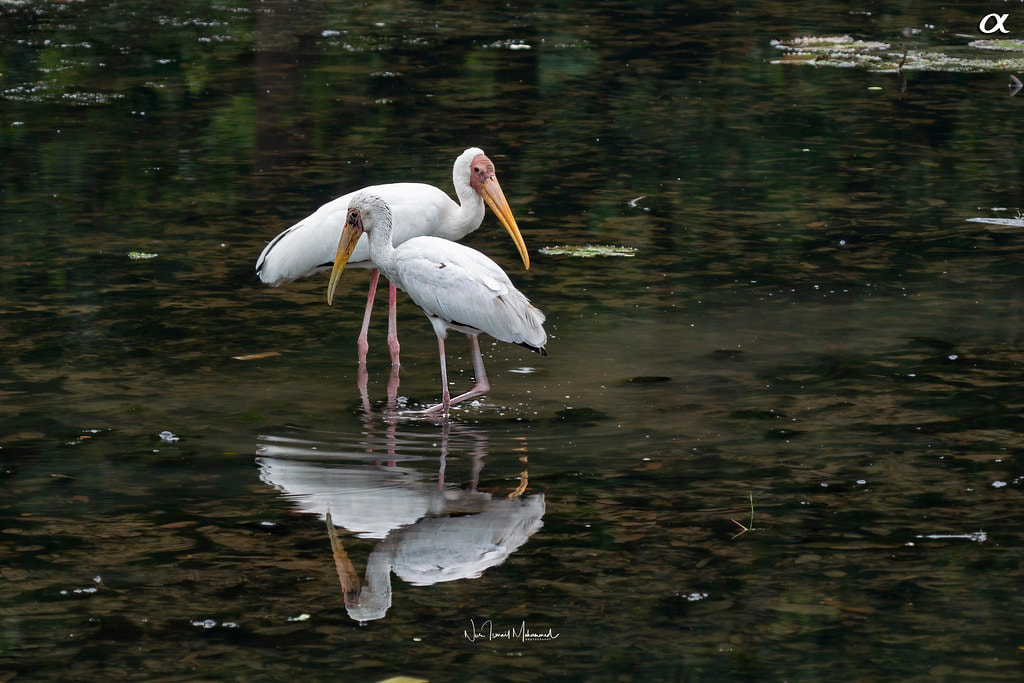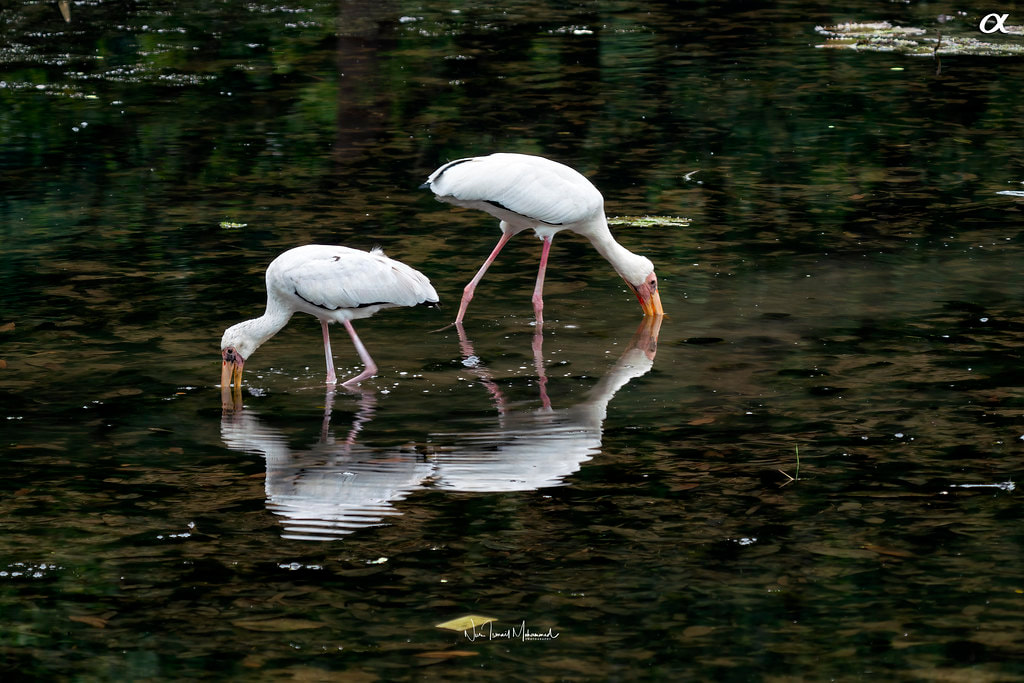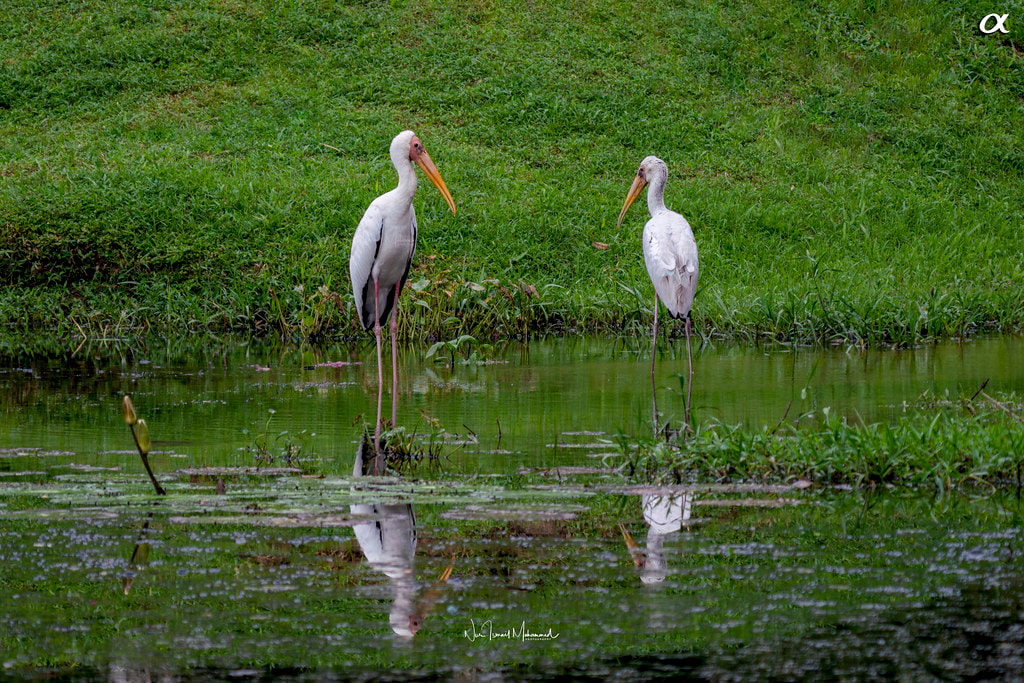|
The dark-sided flycatcher (Muscicapa sibirica) is a small passerine bird belonging to the genus Muscicapa in the Old World flycatcher family Muscicapidae. It has a wide breeding distribution in the East Palearctic with northern birds migrating south for the winter. It is also known as the Siberian flycatcher or sooty flycatcher, the latter name is also used for the sooty flycatcher (M. infuscata) of Africa. It is 13 to 14 cm long. The upperparts are plain and dark grey-brown apart from a pale wingbar and pale edging to the tertial feathers. The breast and flanks have a variable amount of streaky dark grey-brown. This is unlike the similar Asian brown flycatcher which has rather plain pale underparts and the grey-streaked flycatcher which is white below with distinct grey streaks. Dark-sided flycatchers have a pale submoustachial stripe and a dark malar stripe which outlines the white throat and half-collar. The centre of the lower breast and belly is white while the undertail-coverts are white with dark centres to the feathers. The bill is short and dark and the feet are black. The eye is large and has a whitish ring around it. The wings are long with a longer primary projection than the Asian brown flycatcher. The adults of both sexes are alike but juveniles have pale spots on the upperparts, a mottled breast and buff tips to the wing-coverts. The song is a series of thin, high-pitched notes with trills and whistles. The call is a metallic tinkling. Name: Dark-sided flycatcher Scientific: Muscicapa sibirica Malay: Sambar Sibiria / Sambar Sisi-gelap Family: Muscicapidae IUCN Red List (v3.1, 2016): Least Concern Gear: SONY a1 + SEL600F40GM + SEL14TC. Location: Bentong, Pahang. #FullFrameLife #MySONYLife #sony #sonymalaysia #a1 #a9 #SEL600F40GM #SEL200600G #SEL14TC #alpha #AlphaGuru #SAG #NurIsmailPhotography #madebyluminar #skylum #skylummalaysia #luminar #topazlabs #leofoto #pg1 #Fight4ourPlanet #DiscoverWithMYAlpha #DiscoverWithAlpha #AlphaUniverseMY
Copyright © 2021 Nur Ismail Photography. All rights reserved. Do not use or reproduce these images on websites, blogs or publications without expressed written permission from the photographer.
0 Comments
The ferruginous partridge (Caloperdix oculeus) is a species of bird in the family Phasianidae. It belongs to the monotypical genus Caloperdix. It is found in Indonesia, Malaysia, Myanmar, and Thailand. The ferruginous partridge is found in a variety of habitats, including tropical dry forest and tropical moist lowland forest, secondary scrub and secondary bamboo growth. It is found from sea-level to 1,200 m (3,900 ft). The ferruginous partridge ranges from southern Myanmar through the Kra Isthmus into the Malay Peninsula, as well as Borneo and Sumatra. The ferruginous partridge measures from 27 to 32 cm (11–13 in) in length and weighs between 191–230 g (6.7–8.1 oz). The plumage is distinctive, having a rufous head, breast and belly and black scaled with white upper back and sides of breast and flanks. The wings are brown with black spots, and the rest of the back is black scaled with rufous. The sexes are similar except the male has two spurs and the female just one. Name: Ferruginous partridge Scientific: Caloperdix oculeus Malay: Sang Serok Rimba / Sang Seruk Perang Family: Phasianidae IUCN Red List (v3.1, 2016): Near Threatened Gear: SONY a9II + SEL600F40GM. Location: Bukit Tinggi, Pahang #FullFrameLife #MySONYLife #sony #sonymalaysia #a9II #SEL600F40GM #alpha #AlphaGuru #SAG #NurIsmailPhotography #madebyluminar #skylum #skylummalaysia #luminar #topazlabs #leofoto #pg1 #Fight4ourPlanet #DiscoverWithMYAlpha #DiscoverWithAlpha #AlphaUniverseMY
Copyright © 2021 Nur Ismail Photography. All rights reserved. Do not use or reproduce these images on websites, blogs or publications without expressed written permission from the photographer. Actenoides concretus is commonly known as the rufous-collared kingfisher. The adult has medium size with a proportioned head. The rufous-collared kingfisher has a shaggy crest, large and thick bill, blue head and back, and white throat and collar. It's underbody is white and has blue band across its chest. Both male and female has a slight differences appearance, where the male does not have the rufous band across its white abdomen, but present in its flanks. An addition for the female, some feather tips along the blue breast are rufous. Their diet includes fishes, insects, scorpions and small snakes. The rufous-collared kingfisher is confined to the Sundaic lowlands, which include Malaysia, Myanmar, Indonesia, Thailand and Brunei Darussalam (Jeyarajasingam & Pearson, 2012). It was regionally extinct in Singapore. Its habitat constitutes the closed canopy forest and regenerating logged forest. Due to forest loss, forest fires and land conversion, this species is listed as Near Threatened in the IUCN Red List (BirdLife International, 2016). Name: Rufous-collared kingfisher Scientific: Actenoides concretus Malay: Pekaka Rimba Besar / Pekaka Tengkuk Perang Family: Alcedinidae IUCN Red List (v3.1, 2016): Near Threatened Gear: SONY a9II + SEL200600G. Location: Taiping, Perak #FullFrameLife #MySONYLife #sony #sonymalaysia #a9II #SEL200600G #alpha #AlphaGuru #SAG #NurIsmailPhotography #madebyluminar #skylum #skylummalaysia #luminar #topazlabs #rmco #leofoto #pg1 #Fight4ourPlanet
Copyright © 2021 Nur Ismail Photography. All rights reserved. Do not use or reproduce these images on websites, blogs or publications without expressed written permission from the photographer. This is the main reason for my trip to Taiping...hunting for the Eurasian hoopoe. I took a ride with my birding friend Sidek from Taiping to Kuala Gula, a journey which took about 1 hour. The weather was gloomy, with occasional showers and overcast. After waiting for about 20 minutes, the Eurasian hoopoe flew in and perched at a nearby tree. We have about 1 inute of shooting before some photographer started to move forward, startling the hoopoe. From then onwards, the hoopoe only stayed on the ground at the opposite oil palm plantation, The Eurasian hoopoe (Upupa epops) is the most widespread species of the genus Upupa, native to Europe, Asia and the northern half of Africa. Some taxonomists still consider all three species conspecific. Some authorities also keep the African and Eurasian hoopoe together, but split the Madagascar hoopoe. Name: Eurasian hoopoe Scientific: Upupa epops Malay: Burung Hud-hud / Hupo Tunggal Family: Upupidae IUCN Red List (v3.1, 2020): Least Concern Gear: SONY a9II + SEL200600G. After shooting the hoopoe, we were greeted by the Blue-crowned hanging-parrot. The parrot gave us plenty of shooting opportunities, from various angles. Loriculus galgulus or commonly known as the Blue-crowned Hanging-parrot is a small parrot measuring about 14 cm in length (Strange & Jeyarajasingam, 1993). This species can be found in lowland forests up to 1,100 m. Its diet includes flowers, buds, fruits, nuts and seeds. The adults of Blue-crowned Hanging-parrot have generally green plumage and black beaks. Males have a distinctive dark blue patch to the crown, red throat patch, red rump, and a yellow lower back while females are duller than the males and lack the yellow lower back and red throat, and also the blue crown is much less noticeable. The juveniles are duller than the females and have a grey forehead and horn-coloured beak. Name: Blue-crowned hanging-parrot Scientific: Loriculus galgulus Malay: Bayan Kecil / Bayan Serindit Family: Psittacidae IUCN Red List (v3.1, 2016): Least Concern Gear: SONY a9II + SEL200600G + SEL14TC. Later we proceed to drive around in Kuala Gula to shoot the Collared kingfisher, Black-shouldered kite & Brahminy kite. A very characteristic bird of the wetlands, known as Collared Kingfisher belongs to family Alcedinidae. It can be found mostly at tidal mangroves, sandy beaches and coastal scrub, sometimes also at inland gardens and parks. Its size can reach up to 24 cm in length. In appearance, the Collared Kingfisher has a turquoise head and upperparts contrast with the white colour on its collar and underparts. It feeds on crabs, worms, large insects and lizards (Strange & Jeyarajasingam, 1993). Name: Collared kingfisher / White-collared kingfisher Scientific: Todiramphus chloris Malay: Pekaka Bakau / Pekaka Sungai Family: Alcedinidae IUCN Red List (v3.1, 2016): Least Concern Gear: SONY a9II + SEL200600G + SEL14TC. A medium raptor, Elanus axillaris or commonly known as the black-shouldered kite is usually found in treed grasslands and on farms, along roads, and in vacant wastelands of urban and coastal areas. It feeds mainly on rodents, small reptiles, birds, large insects such as grasshoppers and small mammals. The male and female black-shouldered kites are similar in appearance, but young individuals can be distinguished by a streaked, rusty-brown head, back and breast, mottled grey wings with darker shoulders, and white-tipped feathers on the upperparts. The black-shouldered kite is mostly pale grey above, with a pure white head, body and tail and black shoulders. Its wings are white underneath, with black wing tips and the females are larger than males. Its red eyes are marked by a black comma that extends behind it and the nostrils, legs and feet are yellow. The female of the black-shouldered kite takes care of the eggs and the hatchlings with the occasional assistance of the male. The male will do most of the hunting and takes prey to the nest for both the female and the young. Name: Black-shouldered kite Scientific: Elanus axillaris Malay: Lang Bahu Hitam Family: Accipitridae IUCN Red List (v3.1, 2012): Least Concern Gear: SONY a9II + SEL200600G + SEL14TC. Haliastur indus or commonly known as Brahminy Kite is one of the medium-sized raptors (birds of prey), with a white head and breast. The rest of its body is covered by striking chestnut brown. Slightly differ from adult; the immature species of Brahminy Kite is dark brown with paler spots and streaks (Strange & Jeyarajasingam, 1993). It can be found typically near the coasts, especially mangroves swamps, occasionally inland and on big rivers. The Brahminy Kite feeds on carrion (dead animals), insects and fish. It also hunts for live food including crabs, crustaceans, amphibians, small reptiles, fish, insects, small mammals and birds. Name: Brahminy kite Scientific: Haliastur indus Malay: Lang Merah Family: Accipitridae IUCN Red List (v3.1, 2016): Least Concern Gear: SONY a9II + SEL200600G + SEL14TC. Actitis hypoleucos is a small sandpiper with straight dark bill. It is known as Common Sandpiper or Kedidi Pasir in Malay. It can be measured about 20 cm in length. Common sandpiper has dark olive brown crown and upperparts, in contrast with the white breast and belly (Strange & Jeyarajasingam, 1993; Jeyarajasingam & Pearson, 2012). Also, it has a clearly visible white curve up bend of wing and white supercilium with thin black eyeline. It is quite abundant and widespread passage migrant and winter visitor at low elevation. However, it has been recorded at 1,000 m in the Cameron Highlands. This small sandpiper is quite solitary, but may appear in twos or threes. It is very active while feeding as it moves in short and quick strides. Name: Common sandpiper Scientific: Actitis hypoleucos Malay: Kedidi Pasir Family: Scolopacidae IUCN Red List (v3.1, 2016): Least Concern Gear: SONY a9II + SEL200600G + SEL14TC. Tringa totanus, also known as the Common Redshank is a medium-sized wading bird measuring about 28 cm in length. It has longish red legs and a black-tipped red bill. T. totanus is grey-brown above and whitish below with fine streaks on breast during non-breeding season. In flight, it shows very obvious white rear edges to the wings and a white 'V-shape' up its back. While on breeding season, it develops bolder streaks on breast and underparts (Strange & Jeyarajasingam, 1993). The Common Redshanks are found on muddy coasts and occasionally on swamp inland. They feed on small invertebrates, such as aquatic insects and their larvae, spiders and worms found on rocky, muddy or sandy shores during the day and at night highly depending on the tidal situation. Name: Common redshank Scientific: Tringa totanus Malay: Kedidi Kaki Merah Family: Scolopacidae IUCN Red List (v3.1, 2016): Least Concern Gear: SONY a9II + SEL200600G + SEL14TC. #FullFrameLife #MySONYLife #sony #sonymalaysia #a9II #SEL200600G #SEL14TC #alpha #AlphaGuru #SAG #NurIsmailPhotography #madebyluminar #skylum #skylummalaysia #luminar #topazlabs #rmco #leofoto #pg1 #Fight4ourPlanet #DiscoverWithMYAlpha #DiscoverWithAlpha #AlphaUniverseMY
Copyright © 2021 Nur Ismail Photography. All rights reserved. Do not use or reproduce these images on websites, blogs or publications without expressed written permission from the photographer. I've decided to take a trip back to my kampung in Taiping, Perak, with the main target to photograph the Eurasian hoopoe. Departed from Kuala Lumpur early morning on 2 January 2021 and arrived in Taiping in the afternoon. Spent time with my son at Taiping Lake Garden in the evening. Psittacula longicauda is commonly known as Long-tailed Parakeet or Bayan Nuri in Malay (Abdul Rahman, 1981). This species can be found in forests, swamps and mangrove areas, partly cleared areas and oil palm plantations. It feeds on fruits, seeds, flowers, and leaf buds. The Long-tailed Parakeet is a restless bird which is constantly on the move. It climbs around in branches and moves quickly from tree to tree. Although this bird is usually well camouflaged in the green foliage, its continuous screeching is not easily missed. The Long-tailed Parakeet appears with sage green plumage, bluer on the back, its wings have yellow undersides and it has a long narrow tail. The male appears with a red bill and face with black chin while the female has a duller plumage with a dull brownish bill, dull red face, dark green chin and line through its eyes, with no blue on its back. This parakeet species are listed as Vulnerable (VU) in the IUCN Red List due to habitat loss (BirdLife International, 2018). Name: Long-tailed parakeet Scientific: Psittacula longicauda Malay: Bayan Nuri Family: Psittacidae IUCN Red List (v3.1, 2018): Vulnerable Gear: SONY a9II + SEL200600G + SEL14TC. The oriental pied hornbill is an Indo-Malayan pied hornbill, a large canopy-dwelling bird belonging to the family Bucerotidae. Two other common names for this species are Sunda pied hornbill and Malaysian pied hornbill. The species is considered to be among the smallest and most common of the Asian hornbills. It has the largest distribution in the genus and is found in the Indian Subcontinent and throughout Southeast Asia. Its natural habitat is subtropical or tropical moist lowland forests. The oriental pied hornbill's diet includes fruit, insects, shellfish, small reptiles and, sometimes, small mammals and birds including their eggs. Name: Oriental pied hornbill Scientific: Anthracoceros albirostris Malay: Enggang Kelingking / Enggang Belulang / Burung Lilin Family: Bucerotidae IUCN Red List (v3.1, 2016): Least Concern Gear: SONY a9 + SEL200600G + SEL14TC. Alcedo atthis is commonly known as Common Kingfisher. It belongs to family Alcedinidae. This species is the smallest of open country kingfishers that are familiar throughout Europe and Asia. It can be found in water’s edge in open-country swamps, old mining pools, aquaculture ponds, and mangroves. As for this species, both male and female are almost identical except for an orange colouration with a black tip on the lower part of the female’s bill. The colour of their wings and upperparts is blue-green, while the rump and tail are bright blue. It also has bright orange underparts with a small, white bib underneath their bill, on the throats (Strange & Jeyarajasingam, 1993). The common kingfisher feeds mainly on fish and invertebrates and will fly rapidly, low over the water, and hunt for the fish from riverside perches, occasionally hovering above the water's surface. Name: Common kingfisher (male) Scientific: Alcedo atthis Malay: Burung Raja Udang / Pekaka Cit-cit Kecil Family: Alcedinidae IUCN Red List (v3.1, 2016): Least concern Gear: SONY a7RIII + SEL200600G + SEL14TC. Locally known as Pied Triller or Sewah Kapas in Malay (Asyraf et al., 2015), Lalage nigra is a species of bird widely spread in open wooded areas, mangroves, gardens and parks. This species is fairly common across the Oriental region ranging from the Malay Peninsula, Sumatra, Borneo, Java and Philippines (Strange & Jeyarajasingam, 1993; Phillipps, 2014). In general, both sexes have white eyebrows, broad white wingbars, greyish rump and white tip on tail. The male Pied Triller can be identified by the black crown, mantle, wings and tail along with white underparts. The female has a similar appearance as male but with brown color replacing all the black parts together with underparts and rump finely marked with narrow brownish bars. This species usually stays high in the foliage either solitarily on in pairs feeding on insects and small caterpillars (Jeyarajasingam & Pearson, 2012). Name: Pied triller Scientific: Psilopogon oorti Malay: Kuang Kuit / Rembah Dahi Putih / Rembah Kening Putih / Selancang Hitam Putih / Sewah Kapas Family: Campephagidae IUCN Red List (v3.1, 2018): Least Concern Gear: SONY a9II + SEL200600G + SEL14TC. Milky Stork is a very large bird, named for its creamy-white plumage. This species can be found throughout Southeast Asia and prefers inhabit mangroves and mudflats where it can feed on crabs and mudskippers. Milky Stork can be easily identified by its red, naked head skin with a downward curving yellowish bill and dull pinkish-red feet (Strange & Jeyarajasingam, 1993). The male is slightly larger than the female and has thinner and longer bill. The adults of this species are pure white in colour with black flight feathers while the juveniles have duller, milky brown head and neck with black flight feathers. This stork has been categorized as Endangered due to habitat loss and degradation, poaching, human disturbance, and pollution (BirdLife International, 2016). This rare and spectacular bird is in need of special conservation measures. Name: Milky stork Scientific: Mycteria cinerea Malay: Botak Upih / Upih Bakau Family: Ciconiidae IUCN Red List (v3.1, 2016): Endangered Gear: SONY a7RIII + SEL200600G + SEL14TC. #FullFrameLife #MySONYLife #sony #sonymalaysia #AlphaUniverseMY #a9 #SEL200600G #alpha #NurIsmailPhotography #madebyluminar #skylum #skylummalaysia #luminar #topazlabs
Copyright © 2021 Nur Ismail Photography. All rights reserved. Do not use or reproduce these images on websites, blogs or publications without expressed written permission from the photographer. |
AuthorThis is the photography journey of Nur Ismail Photography where all the experiences from this year onwards will be shared with the audience. In collaboration with NiSi Malaysia, Leofoto, SONY Malaysia and Skylum Software. Thanks for viewing! Archives
August 2022
Categories |
